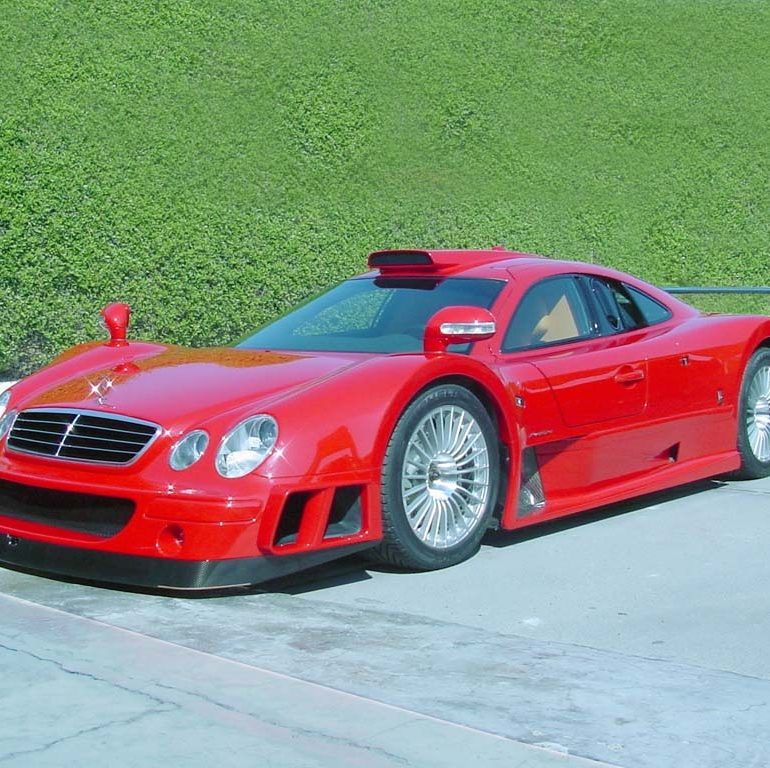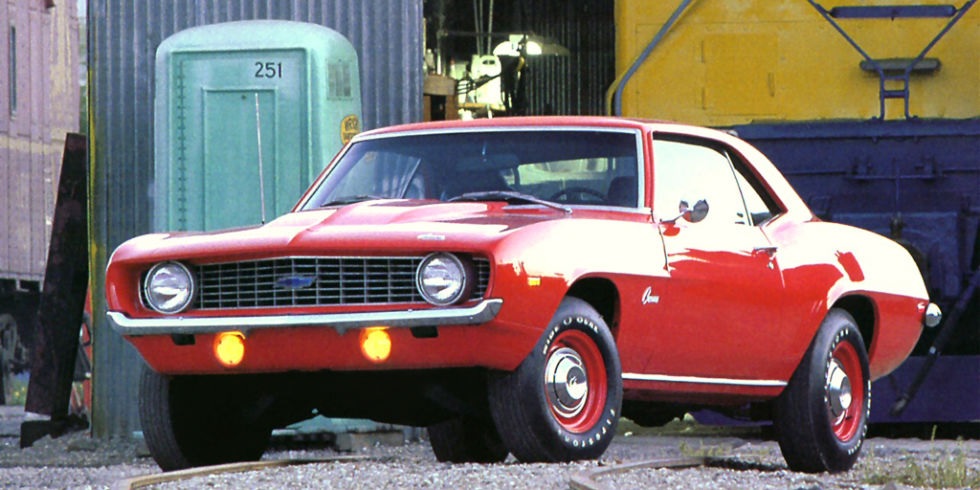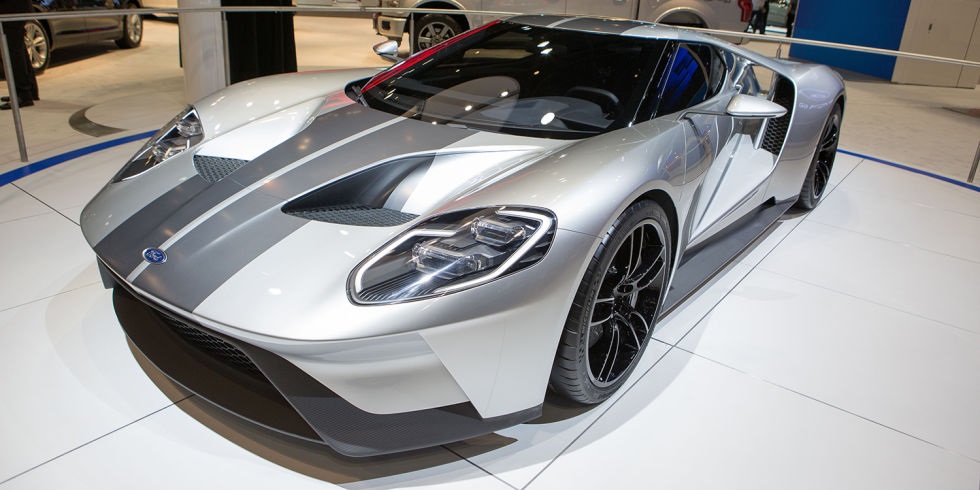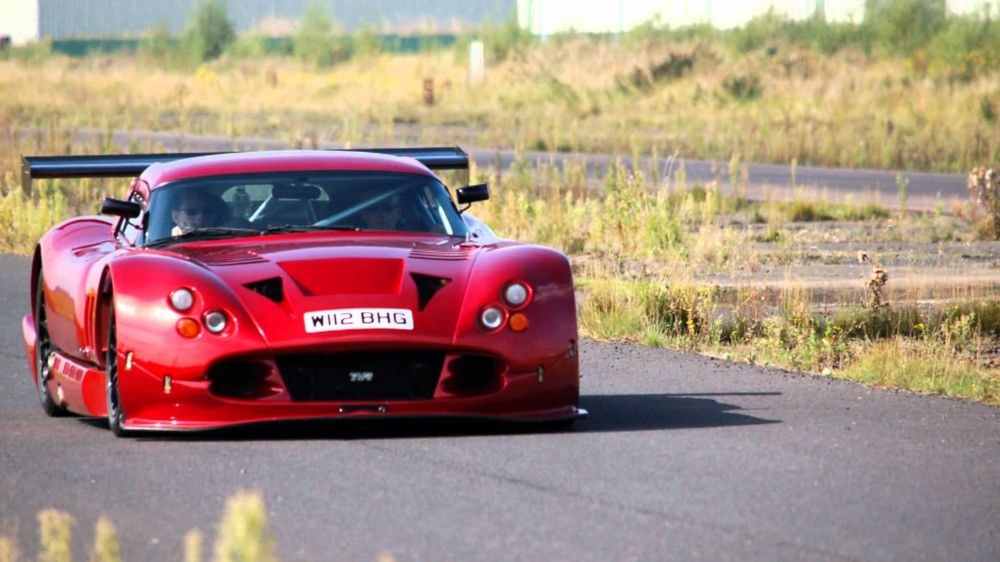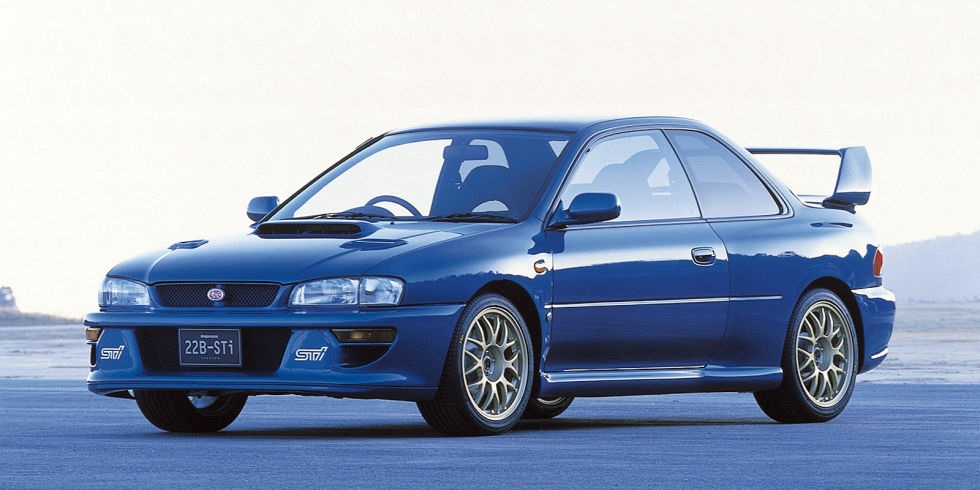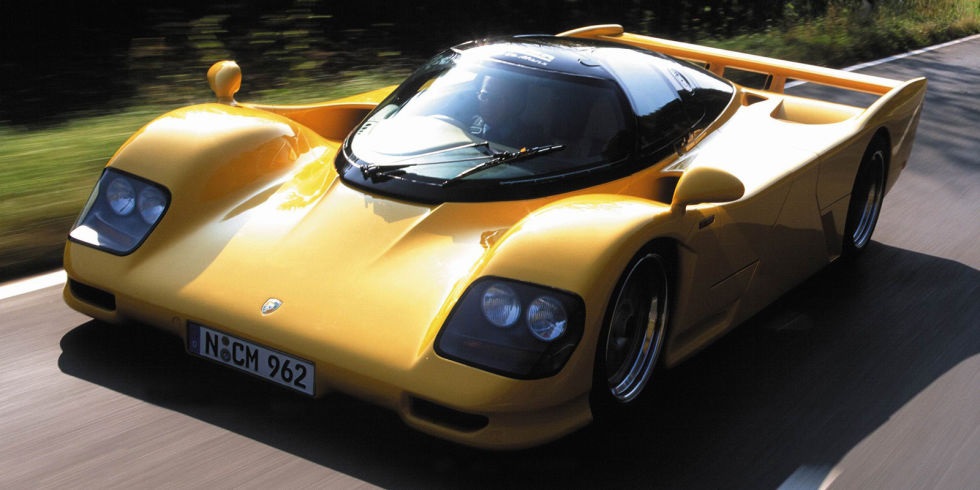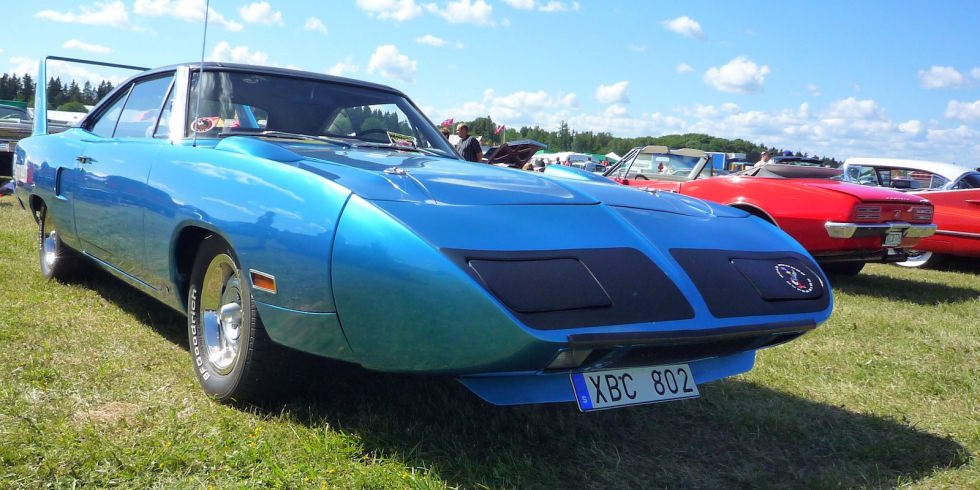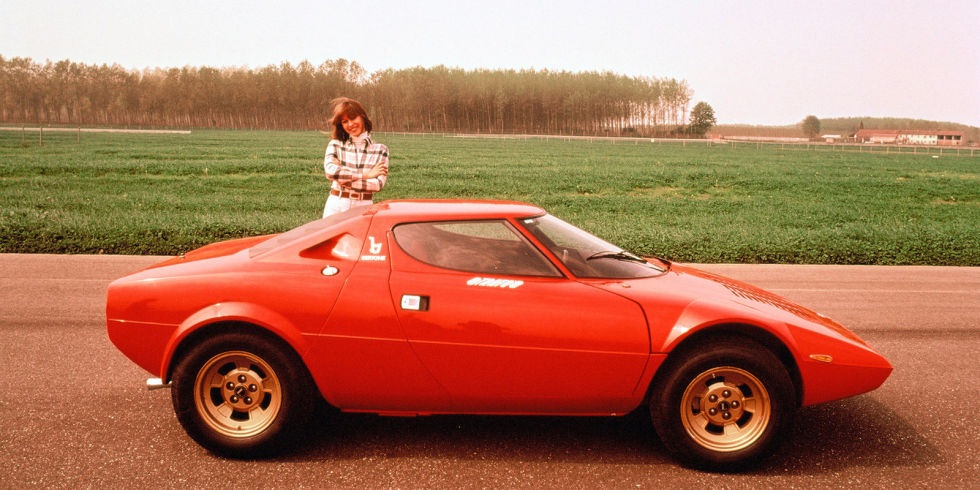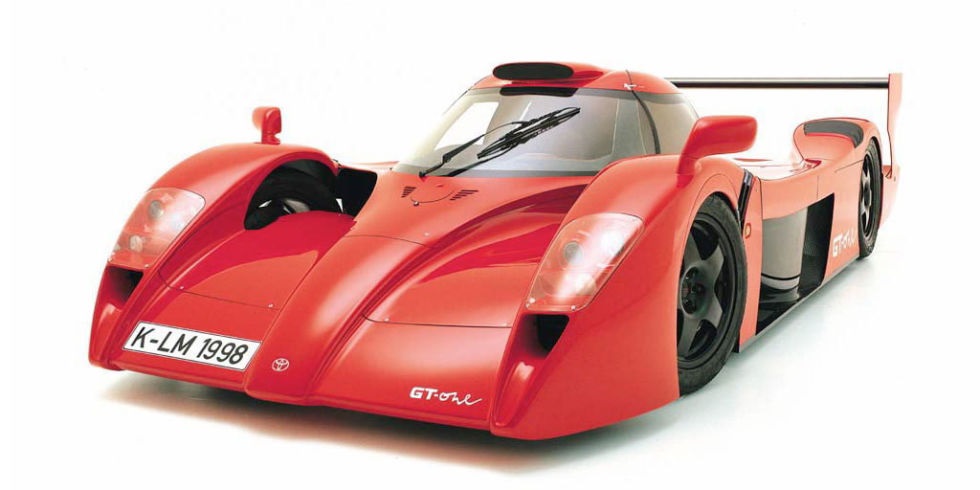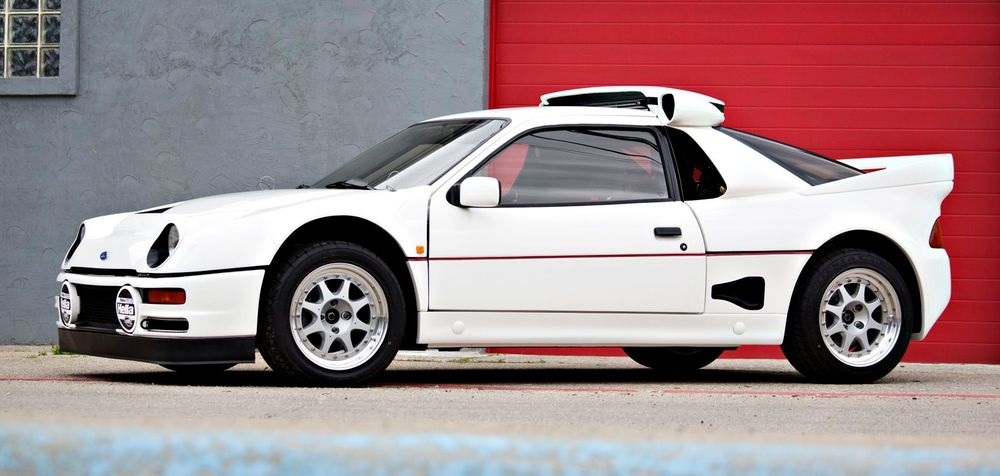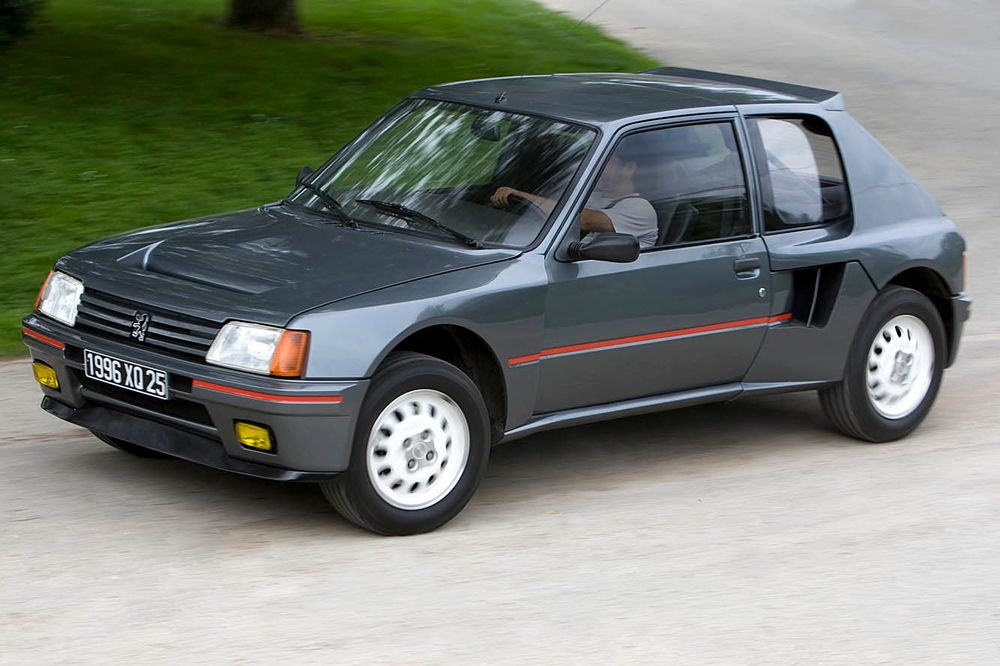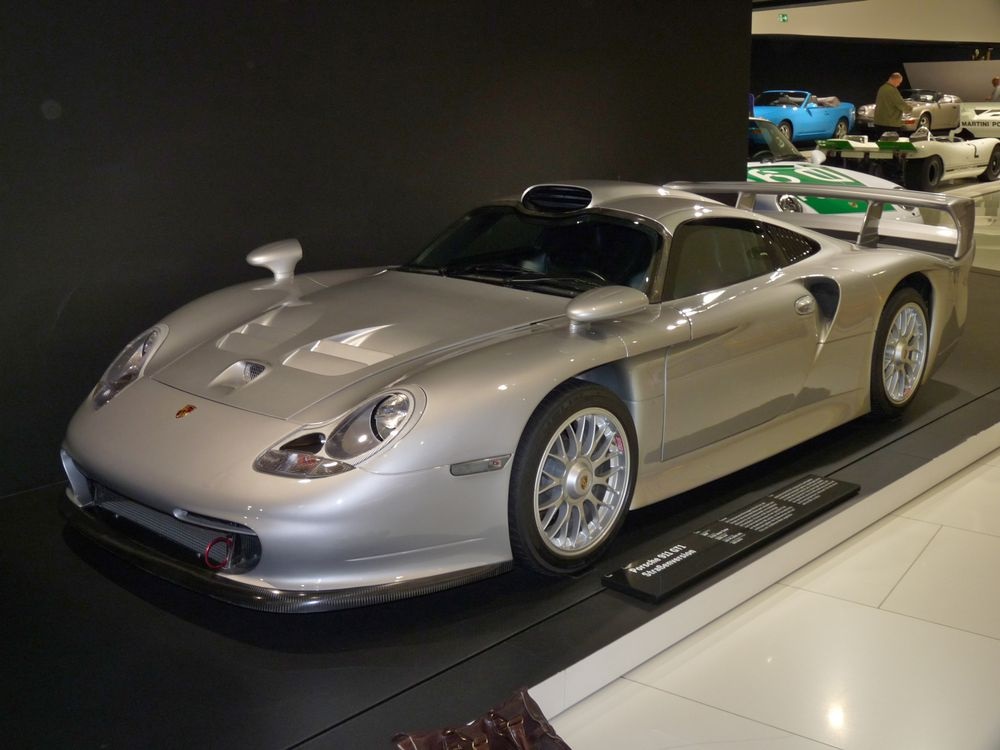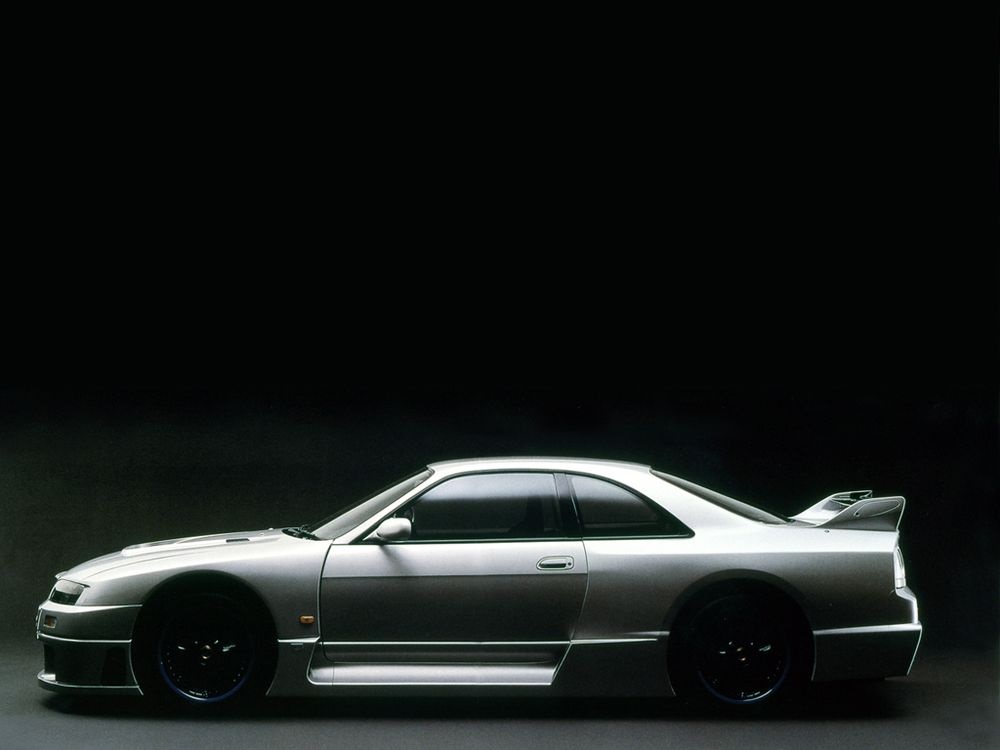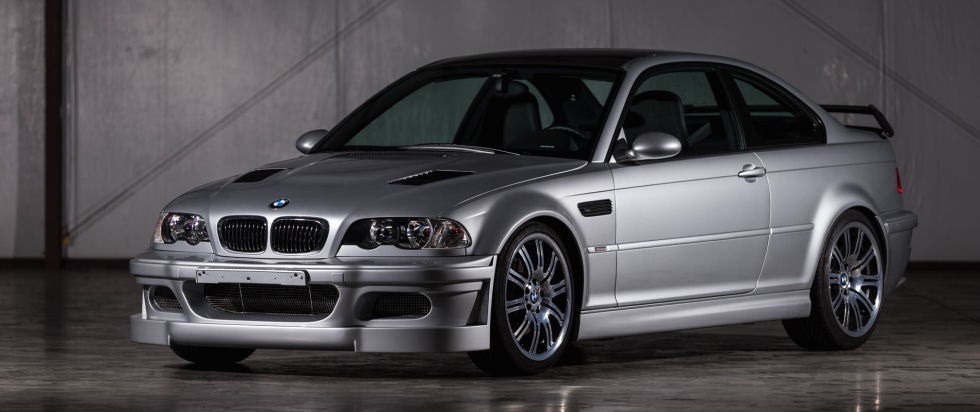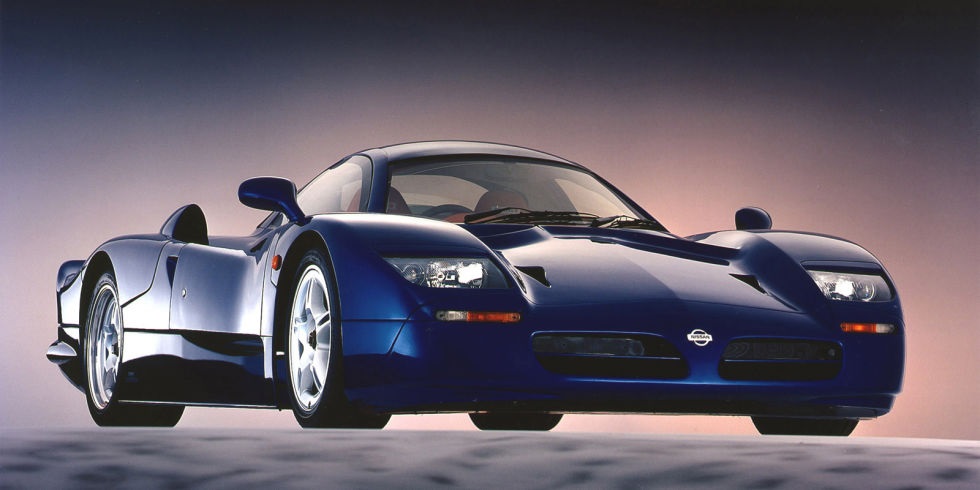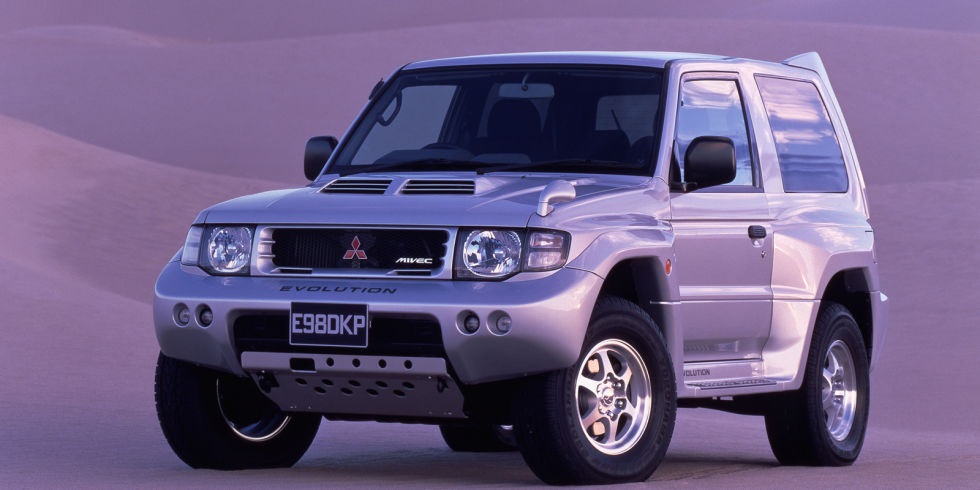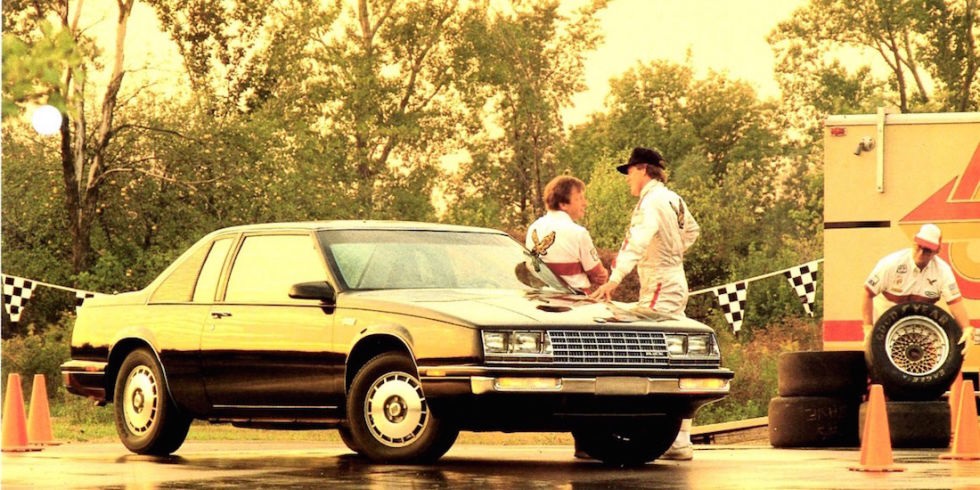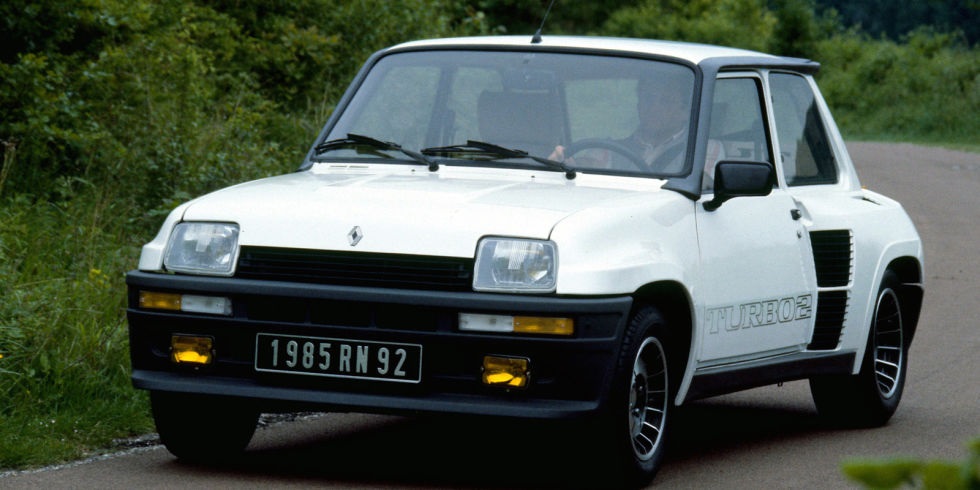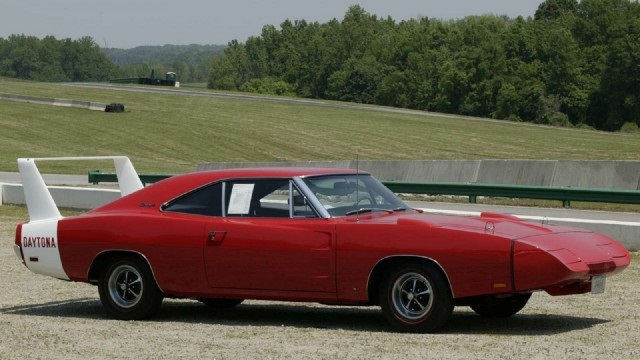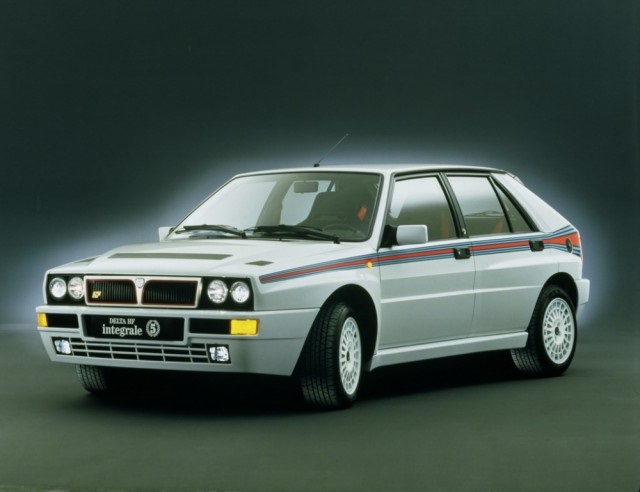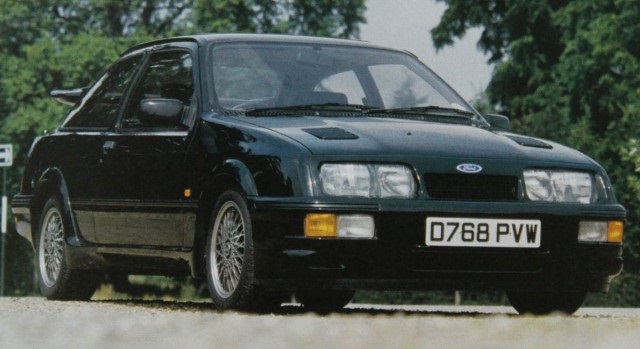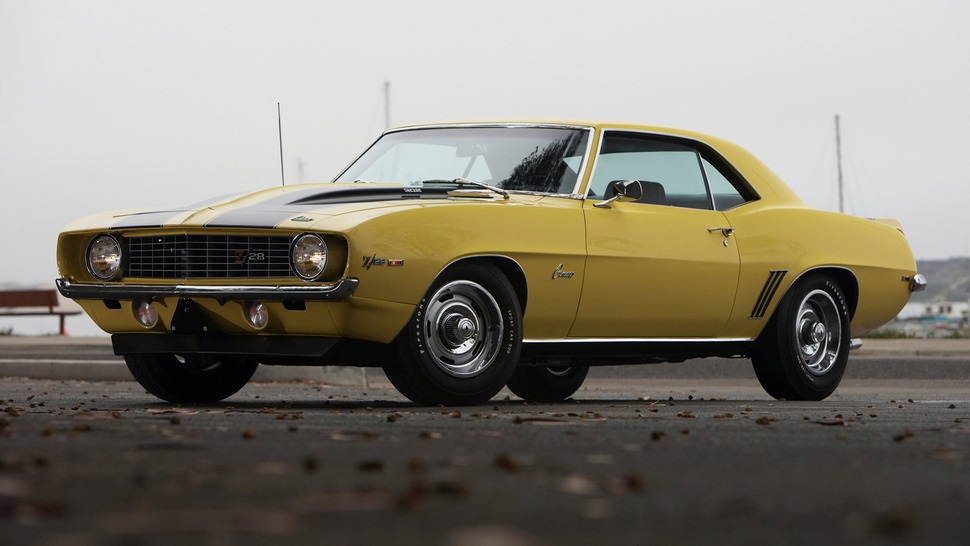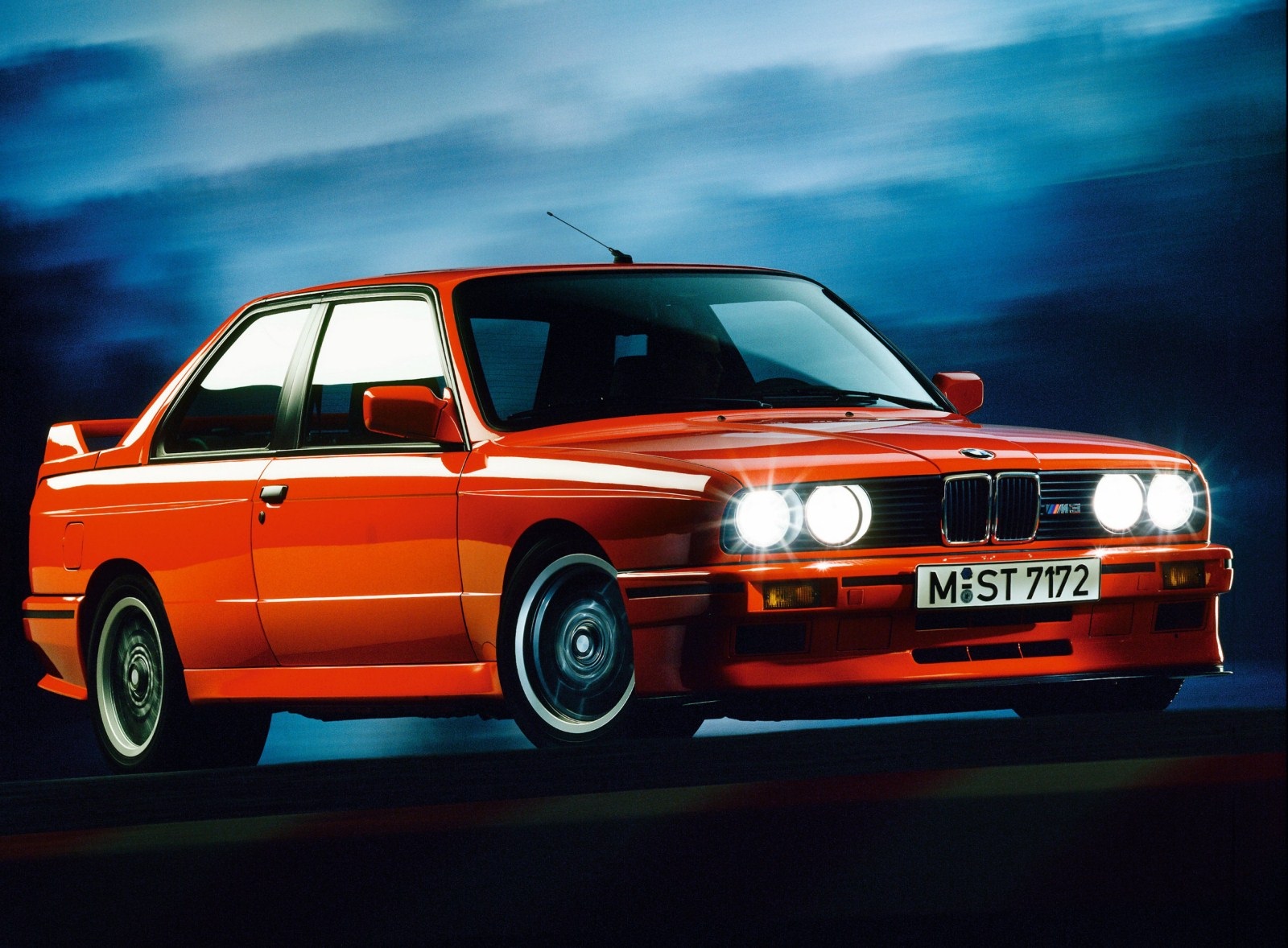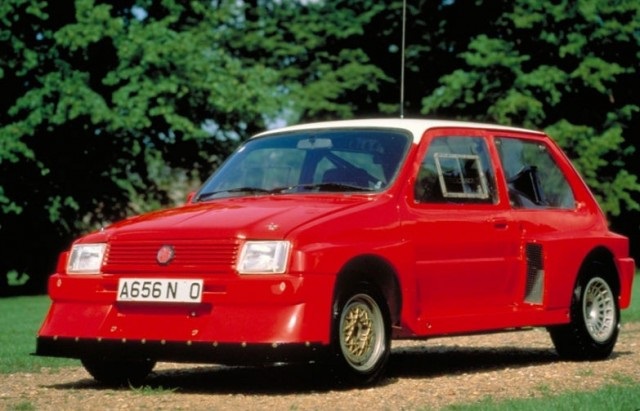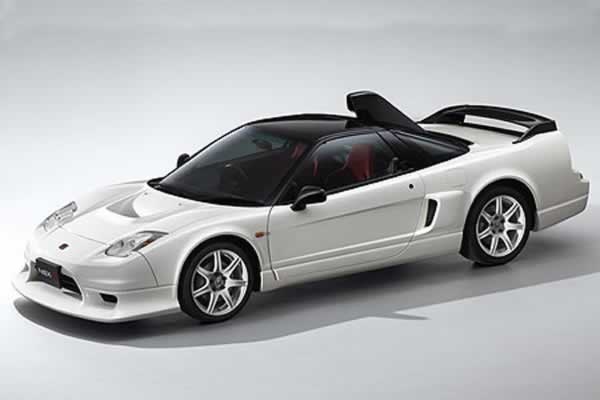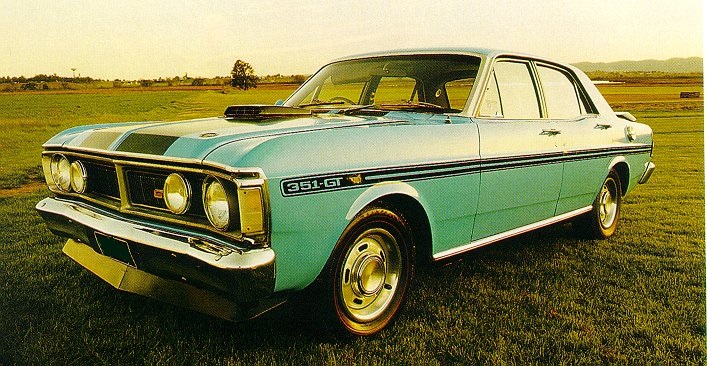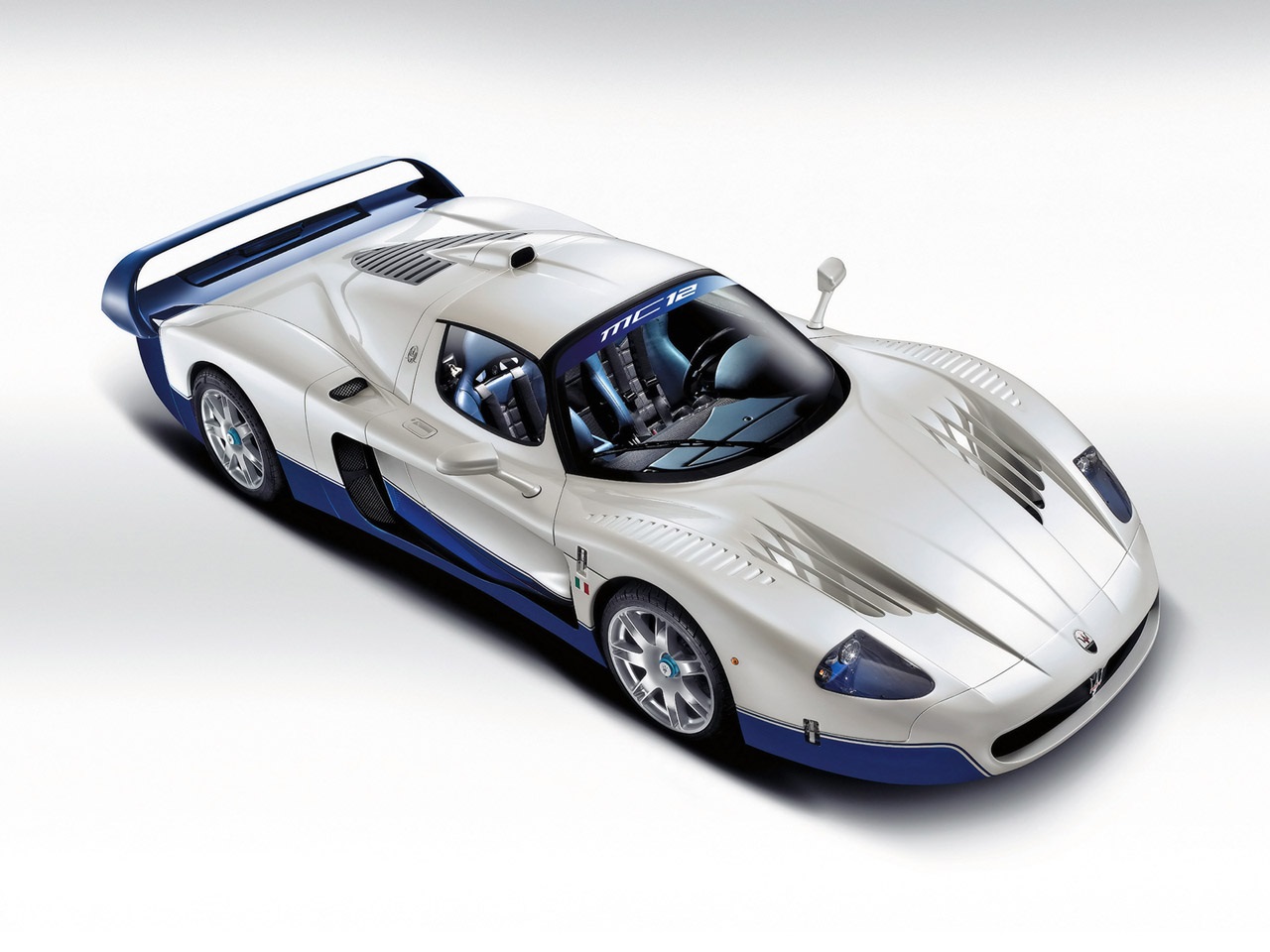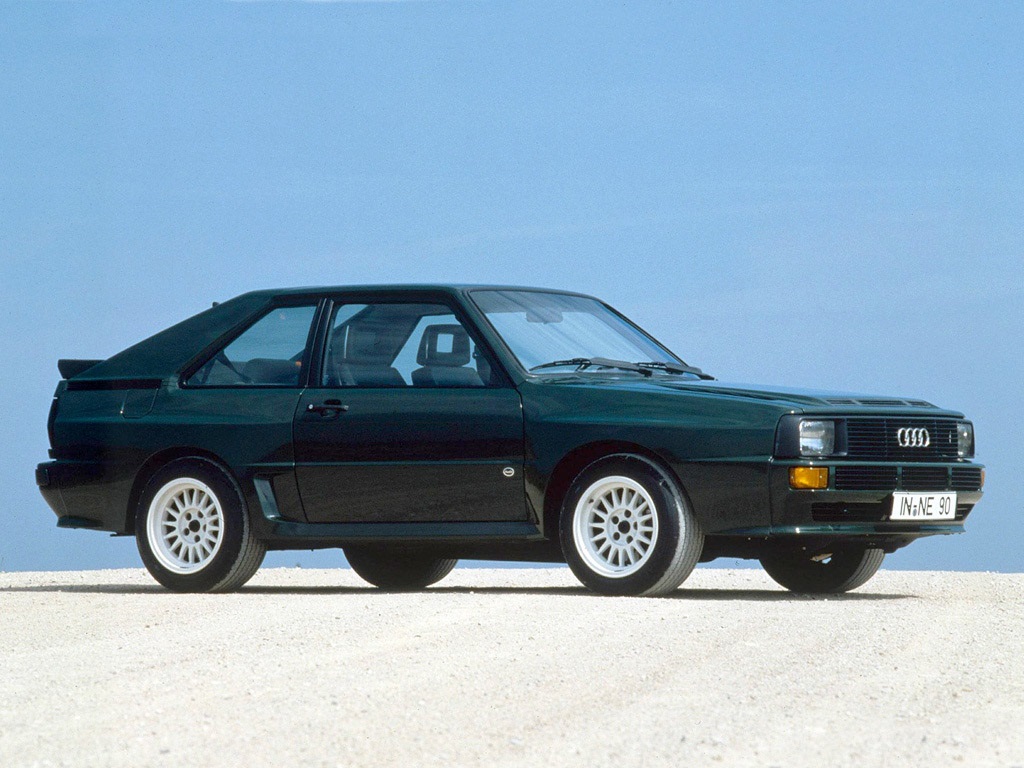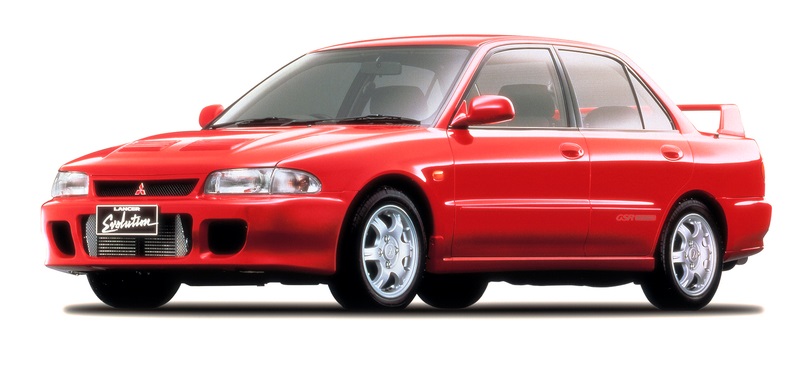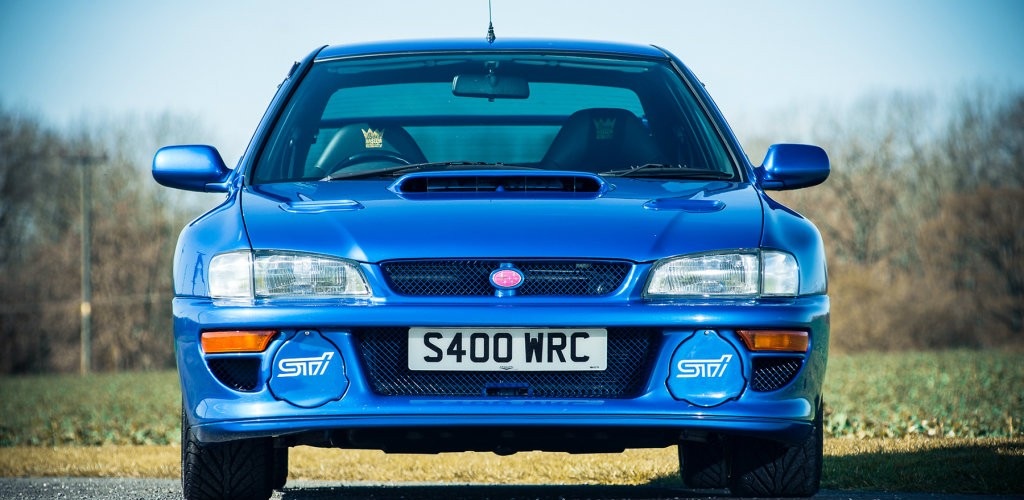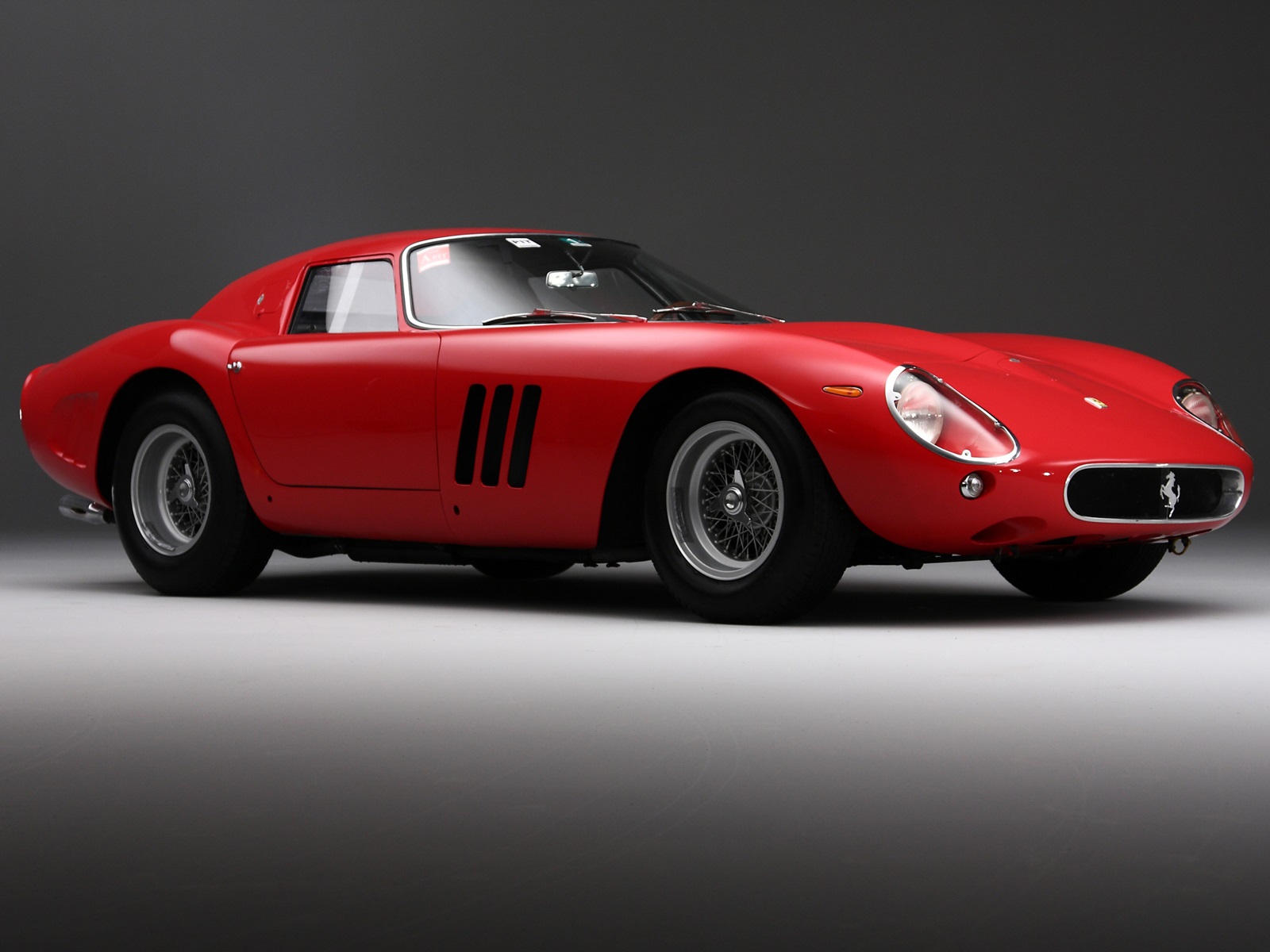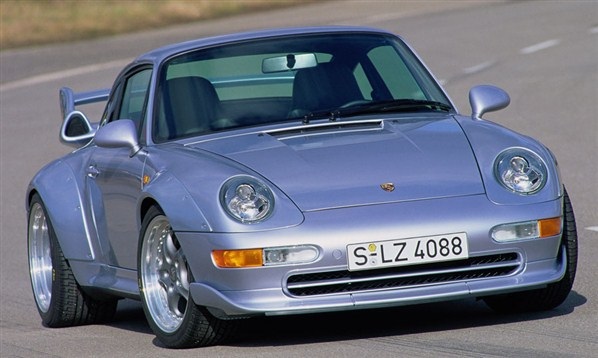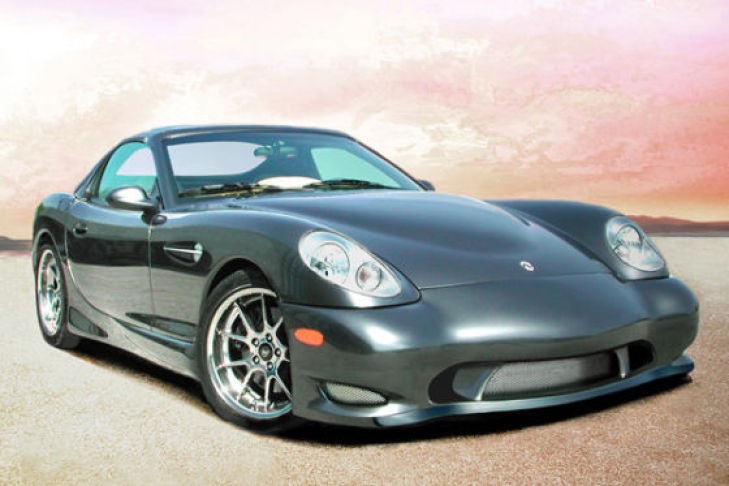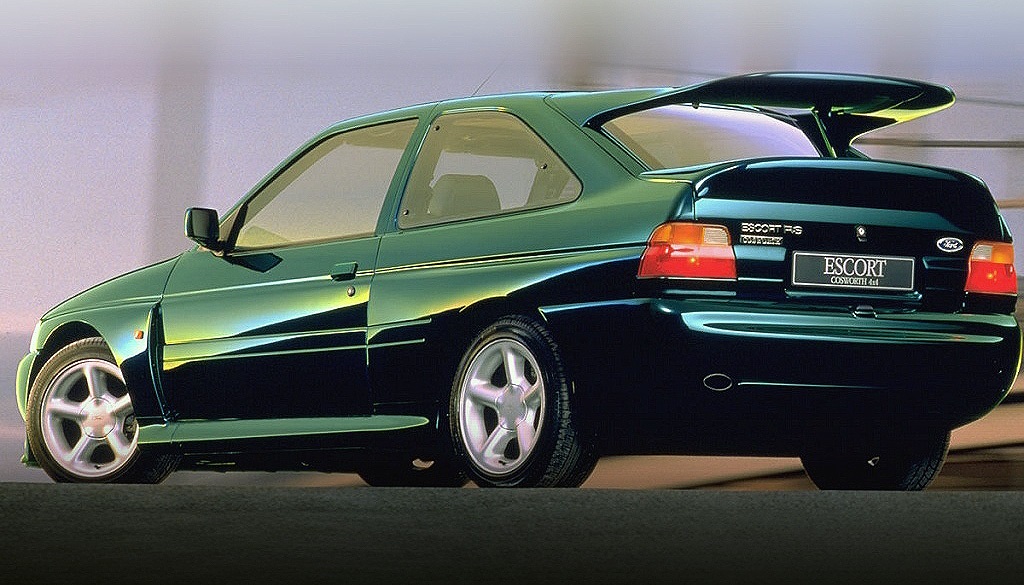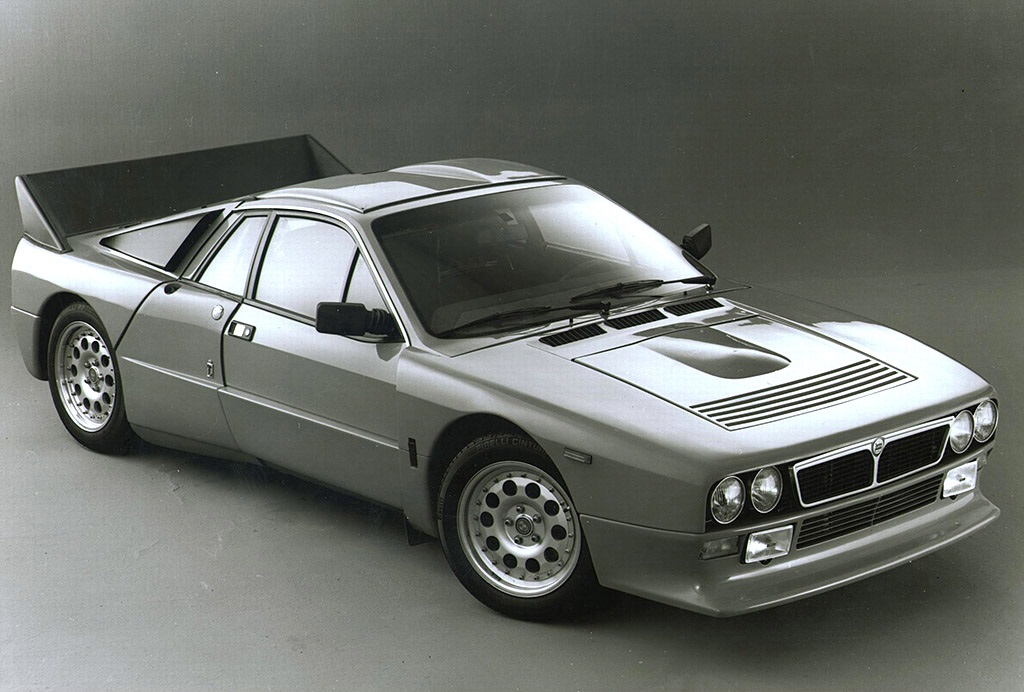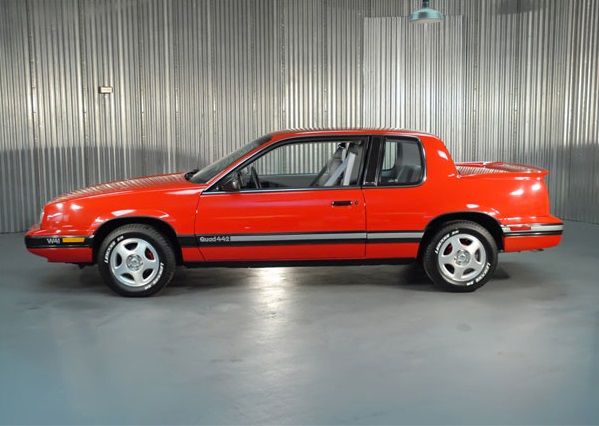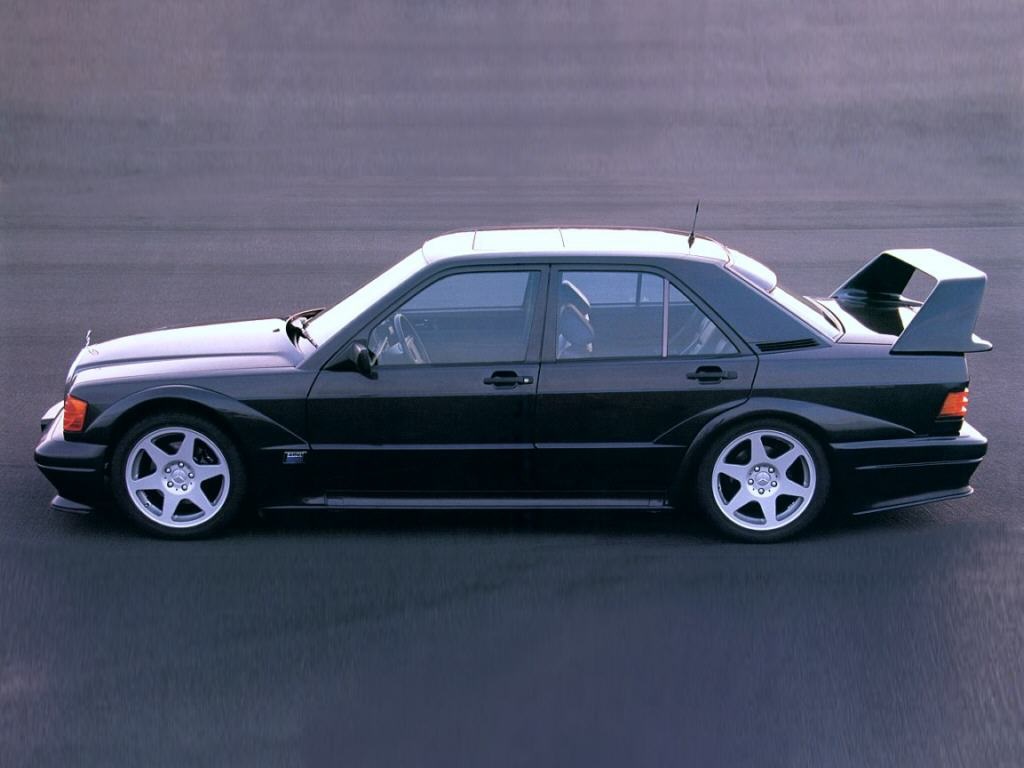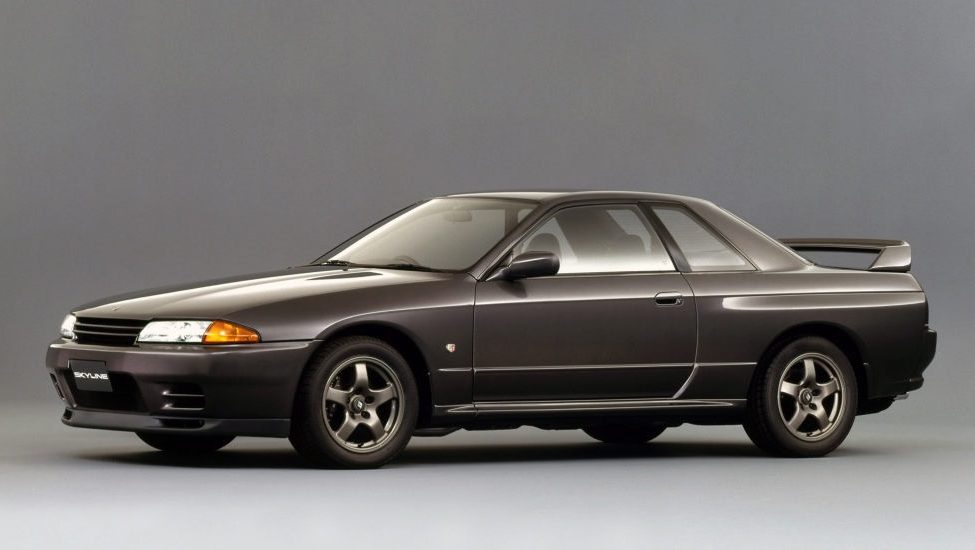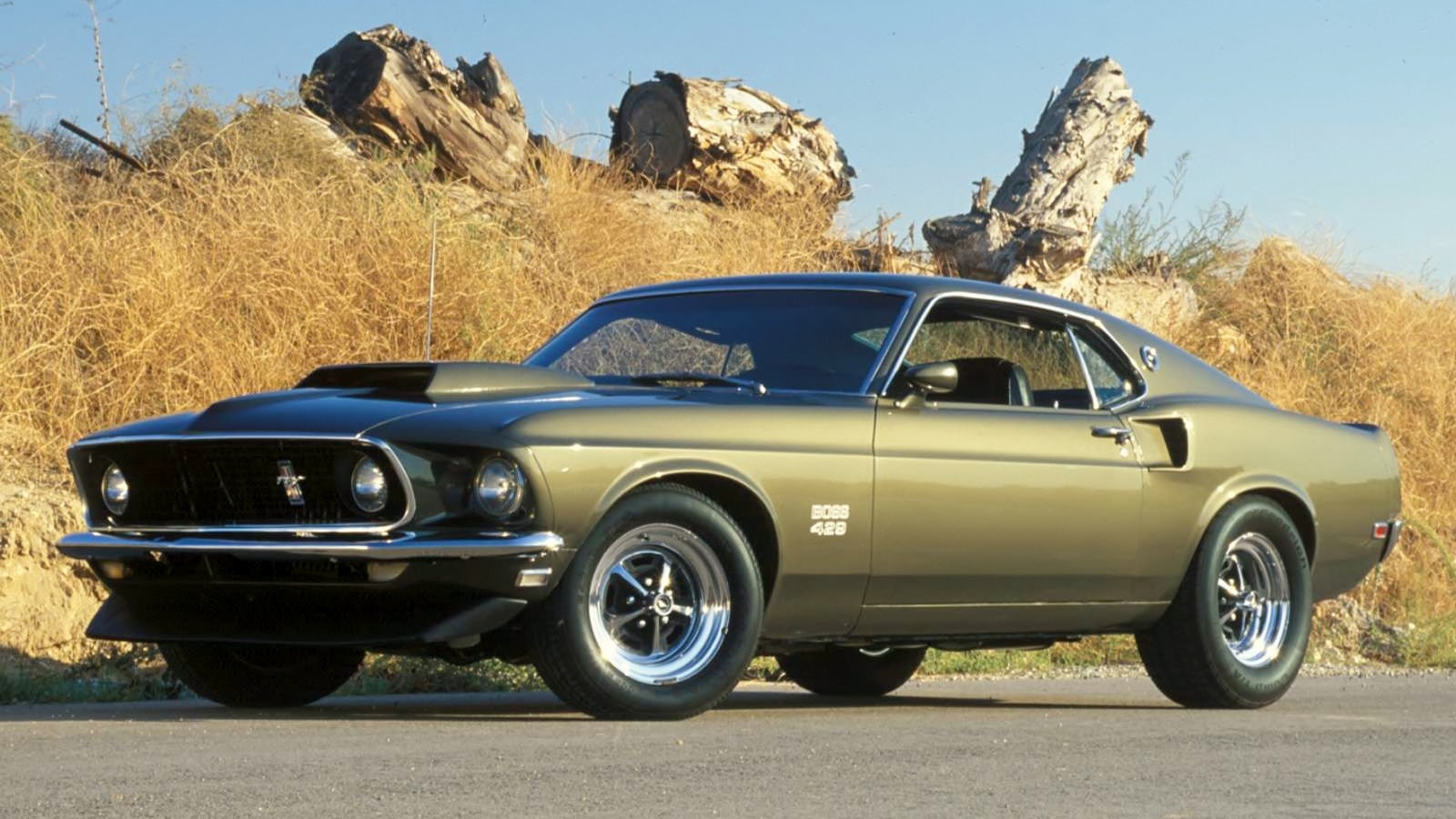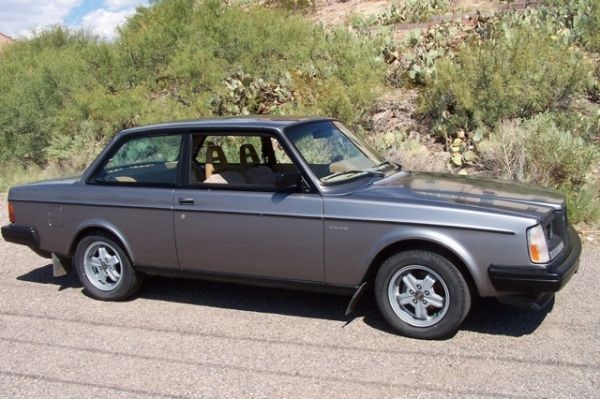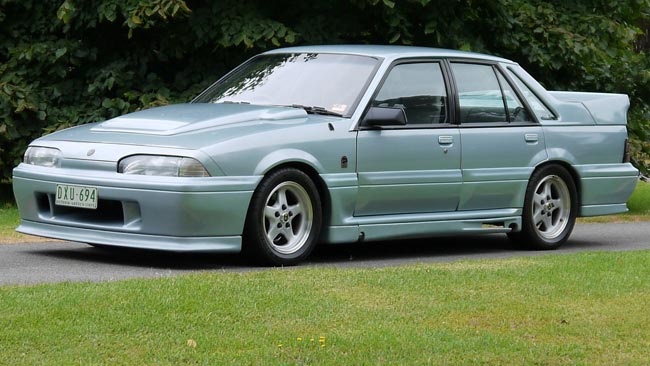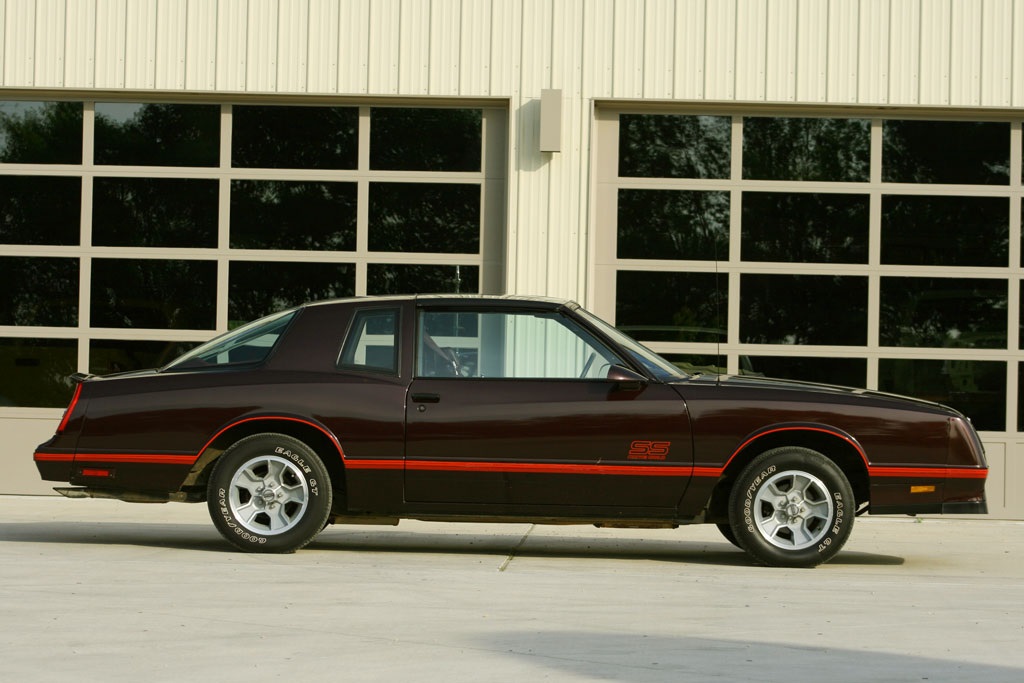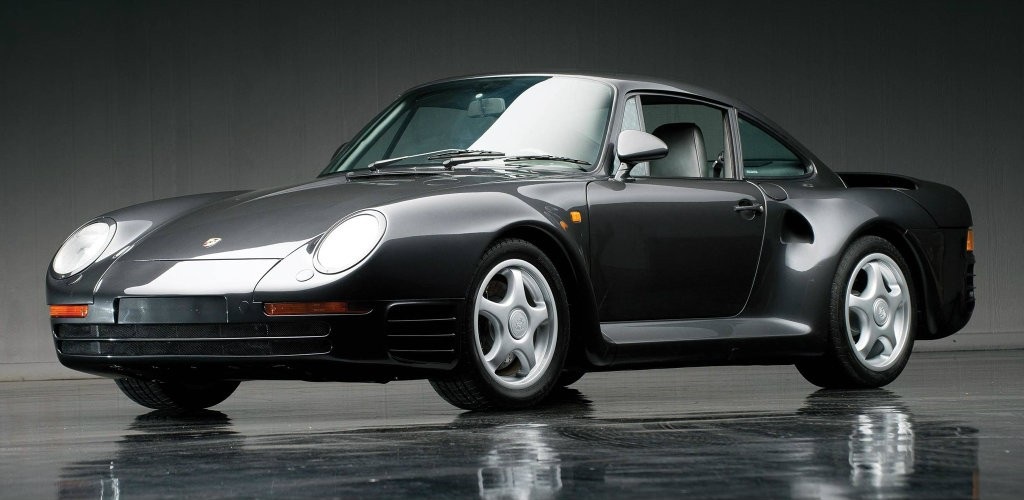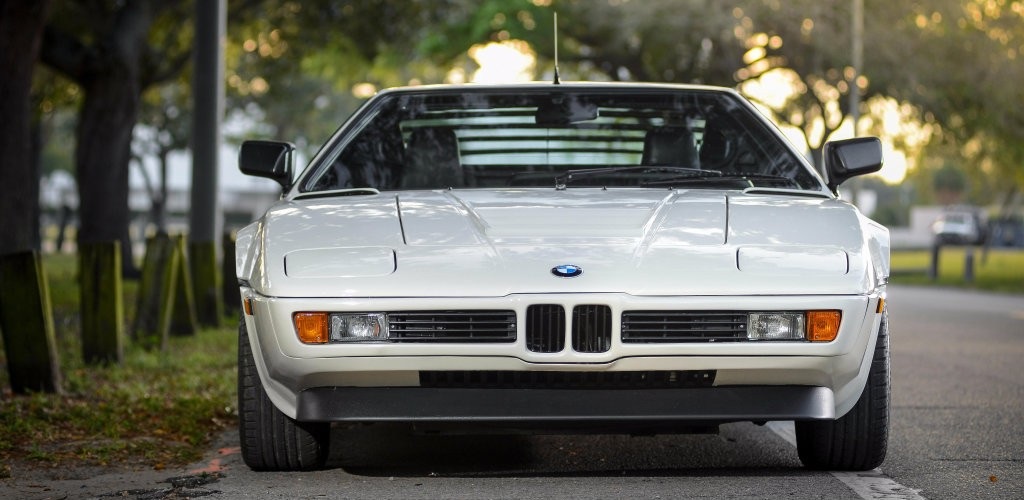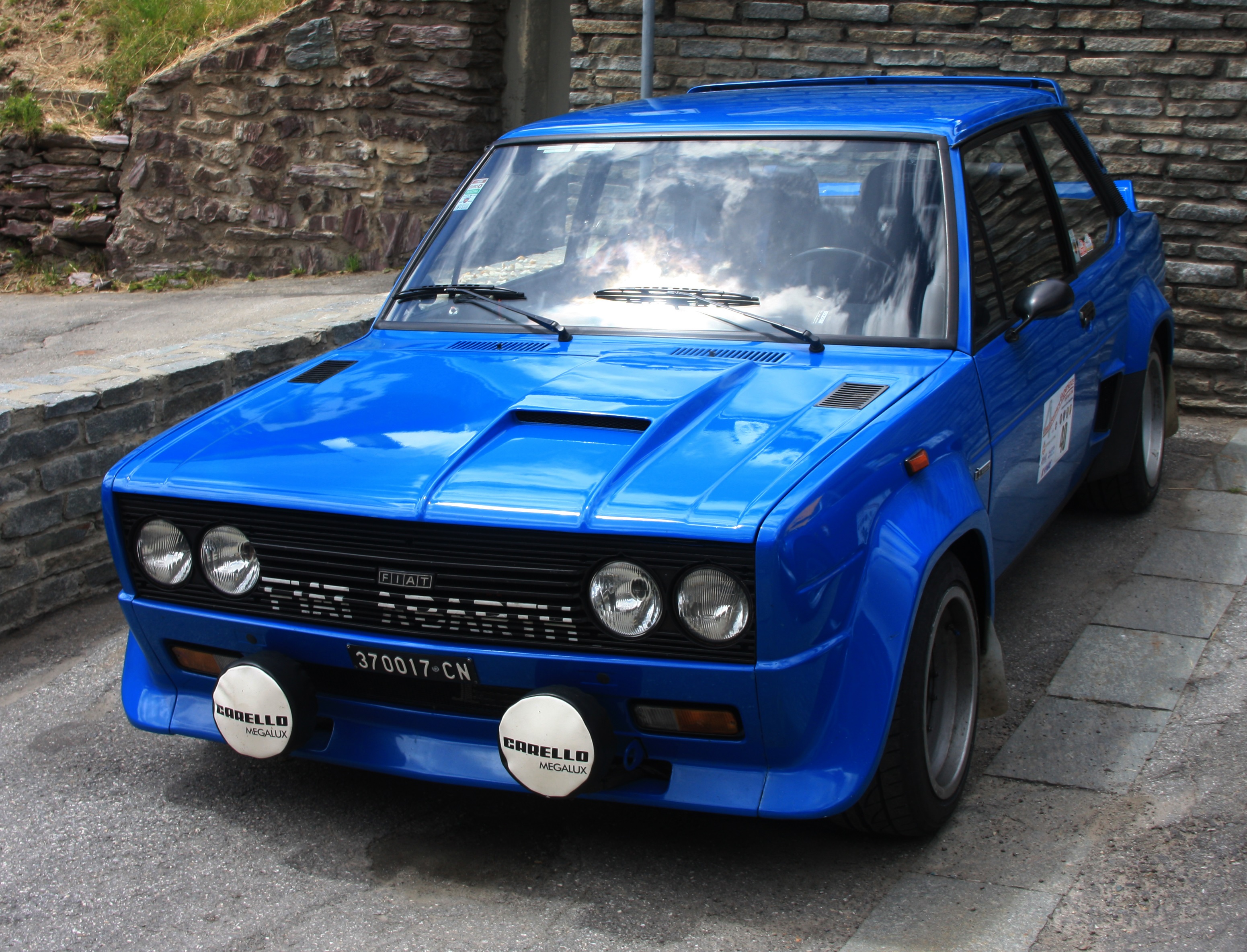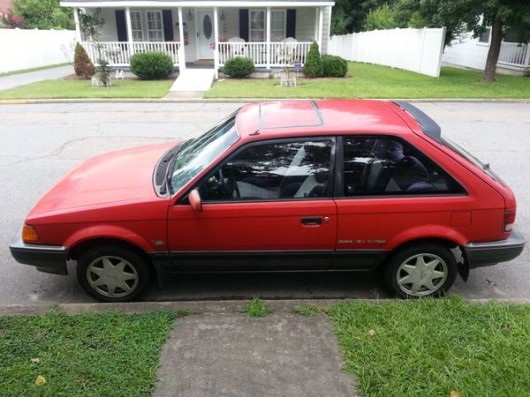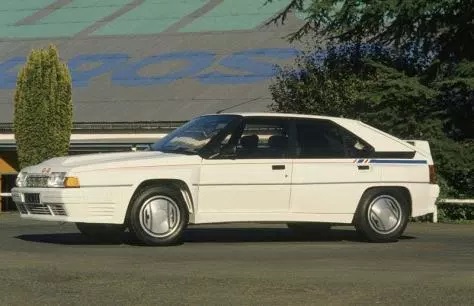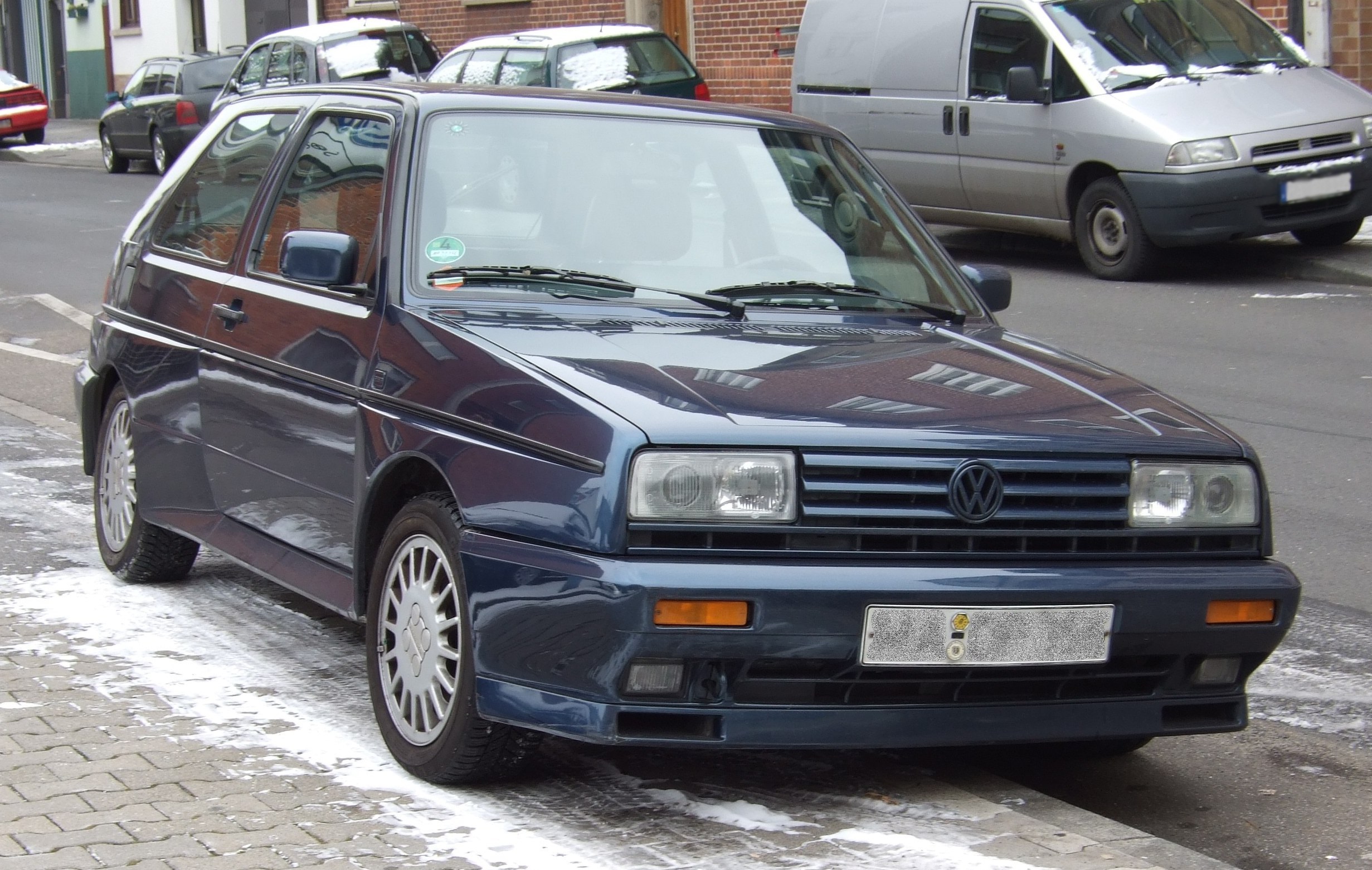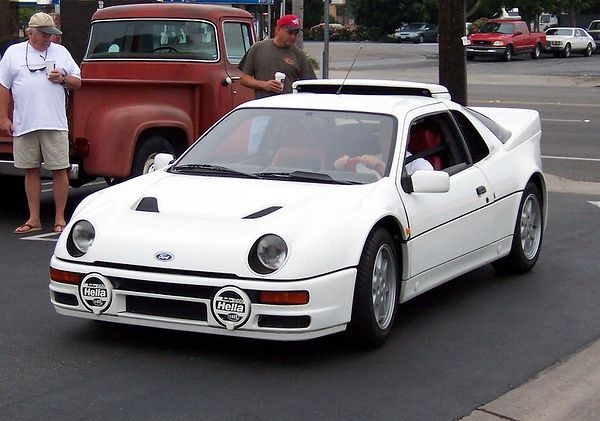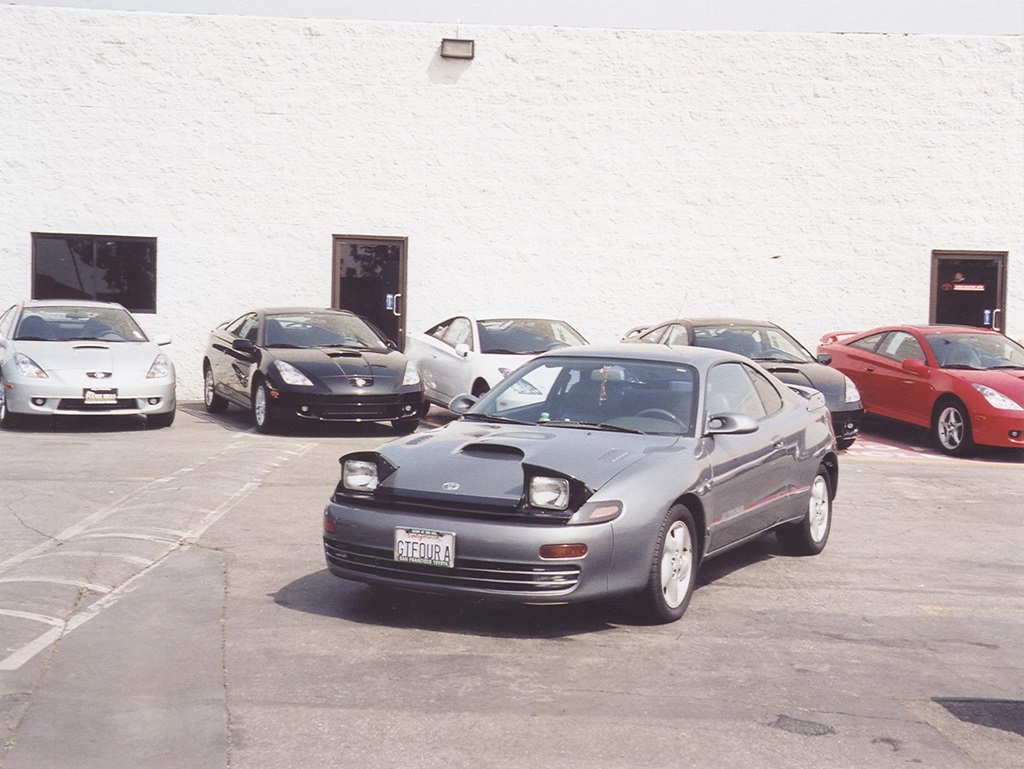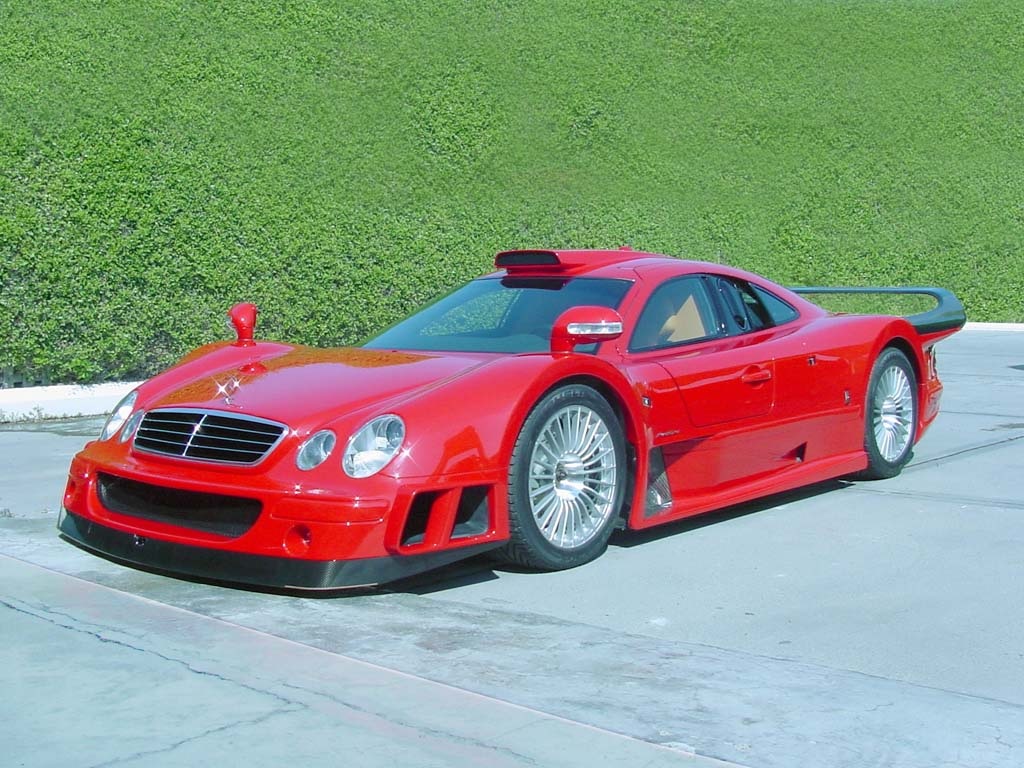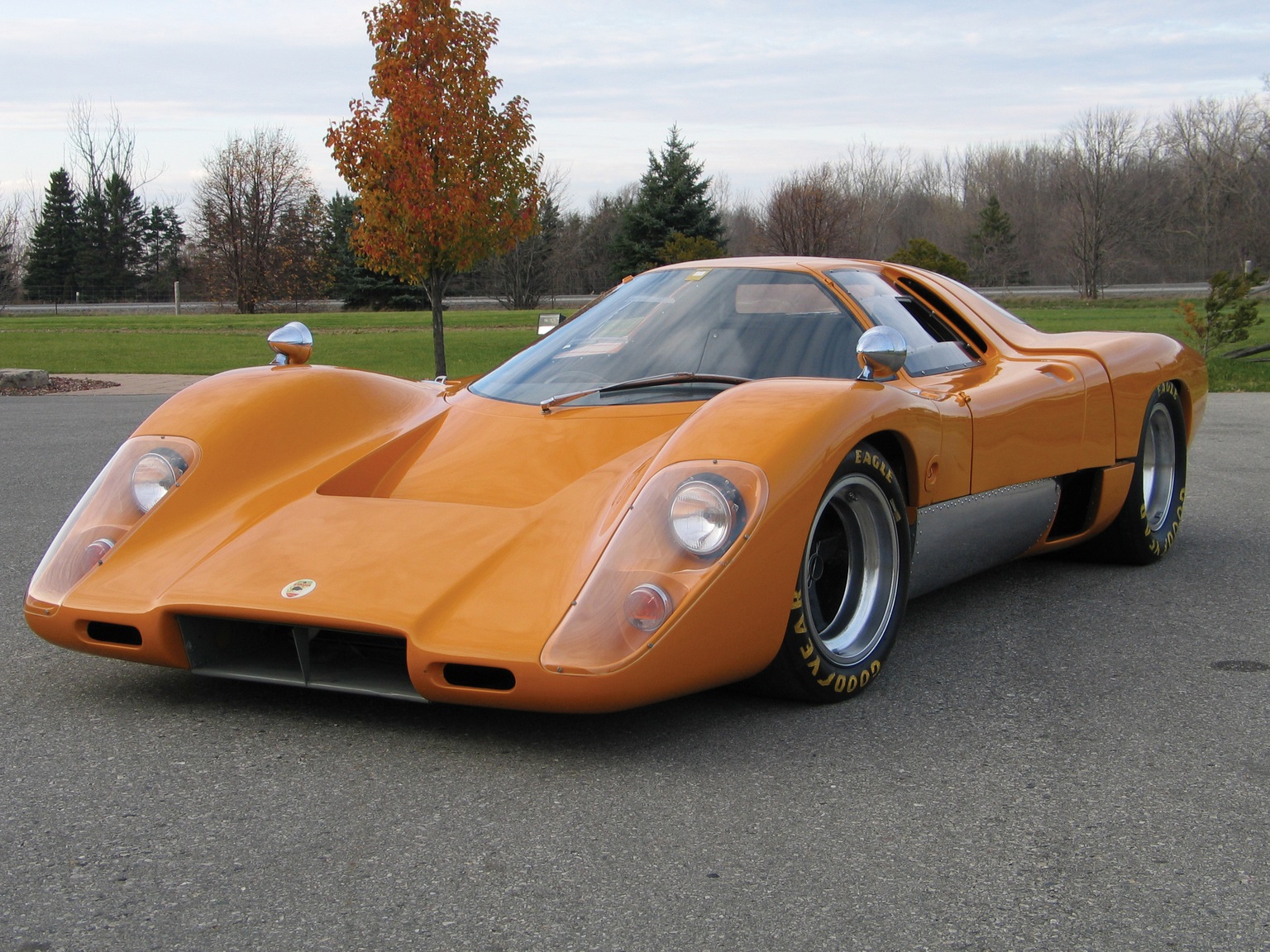We Rounded Up The Cars Every Car Fan Should Know About – Fifty of the Greatest and Craziest Homologation Cars Ever
What is a Homologation Special?
What exactly is a homologation special? The Wikipedia definition says:
Where a racing class requires that the vehicles raced be production vehicles only slightly adapted for racing, manufacturers typically produce a limited run of such vehicles for public sale so that they can legitimately race them in the class. These vehicles are commonly called “homologation specials”.
So, homologation specials are cars that are made according to an exclusive recipe according to a specific motorsport sanctioning body. Cars are manufactured to meet the standards of different race sanctions such as FIA and to allow the car to compete in racing series like Touring Car and Rally Championship Series.
What does the homologation term mean to us?
In layman’s terms – a “homologation special” is a road legal car, produced in limited series by a manufacturer, to meet a race sanctioning body requirement. Typically, the sanctioning body (FIA as example) would state that a certain number of street cars must be produced to allow the car to compete in the racing series, so that essentially meant the car companies would build their perfect racing car and then add “just enough” stuff to make it road legal.
For gearheads like us that means some of the craziest cars you can ever imagine. In this post we list all the automakers and all the homologation specials we could find. Here is our salute to the most insane cars for driving in public roads. So we should thank the racing homologation rules that inspired automakers to produce these machines.
The List – Specs & Performance Numbers
| Manufacturer | Car | Power | Torque | Top Speed | 0-60 mph |
| Chevrolet | 1969 Chevrolet Camaro ZL-1 | 430 hp @ 5200 rpm | 450 lb-ft @ 4400 rpm | 242 kph (150 mph) | 5.3 seconds |
| Ford | 2017 Ford GT | 647 hp @ 6250 rpm | 550 lb-ft @ 5900 rpm | 217 mph (still yet to be proven) | expected to be under 3 seconds |
| TVR | 1998 TVR Cerbera Speed 12 | 811 PS / 800 bhp / 597 kW @ 7250 rpm | 881 Nm / 650 ft.lb / 89.8 kgm @ 5750 rpm | 386 kmh (240 mph) | 2.9 seconds |
| Subaru | 1999 Subaru Impreza 22B STI | 276 bhp (206 kW) @ 6500 rpm | 263 lb-ft (356 Nm) @ 3200 rpm | 248 kmh (154 mph) | 5.3 seconds |
| Dauer | 1993 Dauer 962 Le Mans | 730 BHP @ 8250 rpm | 698 Nm/515 ft lb @ 4200 rpm | 405 kph (253 mph) | 2.7 seconds |
| Plymouth | 1970 Plymouth Road Runner Superbird | 375 bhp / 280 KW @ 4,600 rpm | 651 Nm / 480 ft lbs @ 3,200 rpm | 240 kph (149 mph) | 6.1 seconds |
| Lancia | 1973 Lancia Stratos | 190 PS / 187 bhp / 139 kW @ 7000 rpm | 225 Nm / 166 ft.lb / 22.9 kgm @ 4000 rpm | 230 kmh (143 mph) | 6 seconds |
| Toyota | 1998 Toyota GT-One | 600 bhp / 448 KW @ 6,000 rpm | 650 Nm / 479 ft lbs | 380 kph / 236 mph | 3.2 seconds |
| Ford | 1985 Ford RS200 | 240 PS / 237 bhp / 177 kW @ 6000 rpm | 280 Nm / 207 ft.lb / 28.6 kgm @ 4500 rpm | 229 kph (142 mph) | 5 seconds |
| Peugeot | 1984 Peugeot 205 Turbo 16 | 200 PS / 197 bhp / 147 kW @ 6750 rpm | 255 Nm / 188 ft.lb / 26 kgm @ 4000 rpm | 209 kph (130 mph) | 6 seconds |
| Porsche | 1997 Porsche 911 GT1 Strassenversion | 544 bhp / 406 KW @ 7,000 rpm | 600 Nm / 443 ft lbs @ 4,250 rpm | 310 kph (193 mph) | 3.4 seconds |
| Nissan | 1995 Nissan R33 GT-R LM | 305 bhp / 228 KW @ 6,500 rpm | 373 Nm / 275 ft lbs @ 4,500 rpm | 251 kph (156 mph) | 5.2 seconds |
| BMW | 2001 BMW M3 GTR | 493 bhp / 368 KW @ 7,500 rpm | 480 Nm / 354 ft lbs @ 5,500 rpm | 285 kph (177 mph) | 3.3 seconds |
| Nissan | 1998 Nissan R390 GT1 | 560 bhp / 418 KW @ 6,800 rpm | 638 Nm / 471 ft lbs @ 4,400 rpm | 330 kph (205 mph) | 3.8 seconds |
| Mitsubishi | 1997 Mitsubishi Pajero Evolution | 280 PS / 276 bhp / 206 kW @ 6500 rpm | 348 Nm / 257 ft.lb / 35.5 kgm @ 3000 rpm | 188 kph (117 mph) | 7.8 seconds |
| Buick | 1986 Buick LeSabre Grand National | ~ | ~ | ~ | ~ |
| Renault | 1980 Renault R5 Turbo | 162 PS / 160 bhp / 119 kW @ 6000 rpm | 221 Nm / 163 ft.lb / 22.5 kgm @ 3250 rpm | 209 kph (130 mph) | 6.6 seconds |
| Dodge | 1969 Dodge Charger Daytona | 316.9 kw / 425 bhp @ 5000 rpm | 664.35 nm / 490 ft lbs @ 4000 rpm | 200 mph | 6 seconds |
| Lancia | 1989 Lancia Delta HF Integrale | 200 PS / 197 bhp / 147 kW@ 5500 rpm | 298 Nm / 220 ft.lb / 30.4 kgm @ 3000 rpm | 212 kph (132 mph) | 6.1 seconds |
| Ford | 1986 Ford Sierra RS500 Cosworth | 227 PS / 224 bhp / 167 kW@ 6000 rpm | 277 Nm / 204 ft.lb / 28.2 kgm @ 4500 rpm | 248 kph (154 mph) | 6.1 s |
| Chevrolet | 1967 Chevrolet Camaro Z/28 | 294 PS / 290 bhp / 216 kW@ 5800 rpm | 393 Nm / 290 ft.lb / 40.1 kgm @ 4200 rpm | 212 kph (132 mph) | 6.9 seconds |
| BMW | 1988 BMW M3 (E30) | 195 PS / 192 bhp / 143 kW @ 6750 rpm | 230 Nm / 170 ft.lb / 23.5 kgm @ 4750 rpm | 227 kph (141 mph) | 6.9 seconds |
| Austin Rover Group | 1985 MG Metro 6R4 | 305.7 kw / 410 bhp @ 9000 rpm | 366.07 nm / 270 ft lbs @ 6500 rpm | 198 kph (123 mph) | 4.5 seconds |
| Honda | 2005 Honda NSX-R GT | 280 BHP (206.08 KW) @ 7300 rpm | 225 Ft-Lbs (305 NM) @ 5300 rpm | 280 kph (174 mph) | 4.9 seconds |
| Ford | Ford XY Falcon GTHO Phase III | 224kW (300bhp) @ 5400rpm | 515Nm (380lb-ft) @ 3400rpm | 225 kph (142 mph) | 6.4 seconds |
| Macerati | 2004 Maserati MC12 | 630 PS / 621 bhp / 463 kW @ 7500 rpm | 652 Nm / 481 ft.lb / 66.5 kgm @ 5500 rpm | 330 kph (205 mph) | 3.8 s |
| Audi | 1984 Audi Sport Quattro | 306 PS / 301.5 bhp / 225 kW @ 6500 rpm | 330 Nm / 243 ft.lb / 33.7 kgm @ 4500 rpm | 250 kph (155 mph) | 4.8 seconds |
| Mitsubishi | 1992 Mitsubishi Lancer Evolution | 250 PS / 247 bhp / 184 kW @ 6000 rpm | 309 Nm / 228 ft.lb / 31.5 kgm @ 3000 rpm | 180 kph (112 mph) | 5.2 seconds |
| Subaru | 1994 Subaru Impreza WRX STI | 247 bhp (184 kW) @ 6500 rpm | 228 lb-ft (334.8 Nm) @ 3500 rpm | 217.2 kph (135 mph) | 4.7 seconds |
| Ferrari | 1962 Ferrari 250 GTO | 300 PS / 296 bhp / 221 kW @ 7500 rpm | 294 Nm / 217 ft.lb / 30 kgm @ 5500 rpm | 254 kph (158 mph) | 6.1 seconds |
| Porsche | 1995 Porsche 911 GT2 (993) | 436 PS / 430 bhp / 321 kW @ 5750 rpm | 540 Nm / 398 ft.lb / 55.1 kgm @ 4500 rpm | 295 kph (183 mph) | 3.6 seconds |
| Panoz | 2001 Panoz Esperante GT | 238.6 kw / 320.0 bhp @ 6000 rpm | 429.79 nm / 317.0 ft lbs @ 4750 rpm | 249.4 kph (155 mph) | 5.1 seconds |
| Ford | 1992 Ford Escort RS Cosworth | 227 PS / 224 bhp / 167 kW @ 6250 rpm | 304 Nm / 224 ft.lb / 31 kgm @ 3500 rpm | 220 kph (137 mph) | 6.2 seconds |
| Lancia | 1982 Lancia 037 | 208 PS / 205 bhp / 153 kW @ 7000 rpm | 226 Nm / 167 ft.lb / 23 kgm @ 5000 rpm | 220 kph (137 mph) | 6.6 seconds |
| Oldsmobile | 1991 Oldsmobile Cutlass Calais Quad 442 W41 | 190hp | 160 lb.ft | 125 mph | 7 seconds |
| Mercedes-Benz | 1990 Mercedes-Benz 190E 2.5-16 EVO II | 235 PS / 231.3 bhp / 172 kW @ 7200 rpm | 245 Nm / 181 ft.lb / 25 kgm @ 5000-6000 rpm | 250 kph (155 mph) | 7.1 seconds |
| Nissan | 1990 Nissan Skyline GT-R (R32) | 280 PS / 276 bhp / 206 kW @ 6800 rpm | 353 Nm / 260 ft.lb / 36 kgm @ 4400 rpm | 251 kph (156 mph) | 5.6 seconds |
| Ford | 1969 Ford Mustang BOSS 429 | 380 PS / 375 bhp / 280 kW @ 5200 rpm | 665 Nm / 490 ft.lb / 67.8 kgm @ 3400 rpm | 211 km/h (131 mph) | 5.3 seconds |
| Volvo | 1983 Volvo 242 Turbo Group A | 340HP @ 6600 rpm | 310 ft.lb @ 4000 rpm | 150 mph | ~ |
| Holden | 1988 Holden VL Commodore SS Group A SV | 180 kW (245 PS; 241 hp) @ 5200 rp | 380 Nm @ 4,000 rpm | 230 kph | 6.5 seconds |
| Chevrolet | 1987 Chevrolet Monte Carlo SS Aerocoupe | 134.5 kW / 183 PS / 180 hp | 305 Nm / 225 ft-lb | 205 kph (127 mph) | 8.7 seconds |
| Porsche | 1987 Porsche 959 | 450 PS / 444.3 bhp / 331 kW @ 6500 rpm | 500 Nm / 369 ft.lb / 51 kgm @ 5000 rpm | 314 kph (195 mph) | 3.6 seconds |
| BMW | BMW M1 (E26) | 277 PS / 273 bhp / 204 kW @ 6500 rpm | 330 Nm / 243 ft.lb / 33.7 kgm @ 5000 rpm | 262 kph (163 mph) | 5.6 seconds |
| Fiat Abarth | 1976 Fiat Abarth 131 Rally | 139 PS / 137 bhp / 102 kW @ 6400 rpm | 176 Nm / 130 ft.lb / 17.9 kgm @ 3800 rpm | 190 kph (118 mph) | 8.2 seconds |
| Mazda | 1988 Mazda 323 Turbo | 150 PS (110 kW / 148 hp) @ 6000 rpm | 195 Nm (19.9 mkg / 144 lb-ft) @ 5000 rpm | 210 kph (131 mph) | 7.6 seconds |
| Citroën | 1986 Citroën BX 4TC – Serie 200 | 223 ps (220 bhp / 164 kw) | 300 Nm (221 lb-ft) | 220 kph (137 mph) | 7.5 seconds |
| Volkswagen | 1989 Volkswagen Golf G60 Rally | 160 PS / 158 bhp / 118 kW @ 5800 rpm | 225 Nm / 166 ft.lb / 22.9 kgm @ 3800-4000 rpm | 209 kph (130 mph) | 8.6 seconds |
| Ford | 1985 Ford RS200 | 240 PS / 237 bhp / 177 kW@ 6000 rpm | 280 Nm / 207 ft.lb / 28.6 kgm @ 4500 rpm | 229 kph (142 mph) | 5 seconds |
| Toyota | 1996 Toyota Celica GT4 | 242 PS (178 kW / 239 hp) @ 6000 rpm | 302 Nm (30.8 mkg / 223 lb-ft) @ 4000 rpm | 241 kph (150 mph) | 6.3 seconds |
| Mercedes-Benz | 1997 Mercedes-Benz CLK-GTR | 621 PS / 612 bhp / 456 kW @ 6800 rpm | 770 Nm / 568 ft.lb / 78.5 kgm @ 5250 rpm | 322 kph (200 mph) | 3.8 seconds |
| McLaren | 1969 McLaren M6GT | 375 PS / 370 bhp / 276 kW @ 5800 rpm | 502 Nm / 370 ft.lb / 51.2 kgm @ 4000 rpm | 266 kph (165 mph) | 4.2 seconds |
In Detail – The Homologation Specials We Absolutely Love
1. 1969 Chevrolet Camaro ZL-1
Power: 430 hp @ 5200 rpm | Torque: 450 lb-ft @ 4400 rpm| Top Speed: 242 kph (150 mph) | 0-60 mph: 5.3 seconds
A loophole in Chevy’s custom ordering process let a handful of dealers order the baddest Camaro imagined back in 1969. It had a big block 427 V8 like many other Camaros, only its V8 was all-aluminum and designed for Can Am racers. There were plenty of fast Camaros in the late-1960s, but this was totally unhinged.
Learn more about the 1969 Chevrolet Camaro ZL-1.
2. 2017 Ford GT
Power: 647 hp @ 6250 rpm | Torque: 550 lb-ft @ 5900 rpm | Top Speed: 217 mph (still yet to be proven) | 0-60 mph: expected to be under 3 seconds
The homologation special is mostly dead today, but Ford brought it back in spirit with. From the outset, it’s abundantly clear Ford had top-level racing in mind when designing the new GT: The street car’s engine is adapted from a Daytona Prototype powerplant. The GT road car might not be as raw and untamed as some of the other cars on this list, but it’s philosophically similar.
Learn more about the 2017 Ford GT.
3. 1998 TVR Cerbera Speed 12
Power: 811 PS / 800 bhp / 597 kW @ 7250 rpm | Torque: 881 Nm / 650 ft.lb / 89.8 kgm @ 5750 rpm | Top Speed: 386 kmh (240 mph) | 0-60 mph: 2.9 seconds
The TVR Cerbera Speed 12 was an ultra high performance concept vehicle designed by TVR in 1997. Based in part on the TVR hardware at that time, the vehicle was intended to be both the world’s fastest road car and the basis for a GT1 class Le Mans racer.
The vehicle’s engine, displacing 472 cui and having twelve cylinders, was reportedly capable of producing nearly 1000 horsepower, although an exact measurement was never made. It’s performance was said to be astonishing, and by all calculations it would have been capable of hitting sixty miles per hour in the low-three second range and power to well over 240 per hour.
Learn more about the 1998 TVR Cerbera Speed 12.
4. 1999 Subaru Impreza 22B STI
Power: 276 bhp (206 kW) @ 6500 rpm | Torque: 263 lb-ft (356 Nm) @ 3200 rpm | Top Speed: 248 kmh (154 mph) | 0-60 mph: 5.3 seconds
If you’re a fan of the today’s WRX STI, this is the car you have to thank. For the 22B, Subaru took the standard Impreza STI’s 2.0-liter engine and increased displacement to 2.2 liters, with power rising to 280-hp. Big fender flares and a rear wing set the visual template for all STIs to come. Only 424 were built and apparently only two live in the U.S.
5. 1993 Dauer 962 Le Mans
Power: 730 BHP @ 8250 rpm | Torque: 698 Nm/515 ft lb @ 4200 rpm | Top Speed: 405 kph (253 mph) | 0-60 mph: 2.7 seconds
One of the weirder footnotes in Le Mans history is the Dauer 962, which won the race in 1994 thanks to some creative rulebook interpretation. Dauer took a handful of Porsche 962s, which were the dominant car of the Group C era, and modified them for street use. It is one of the most extraordinary cars to be sold for the streets, but that’s what allowed Porsche to enter the 962 in the GT category at Le Mans in 1994.
Learn more about the 1993 Dauer 962 Le Mans.
6. 1970 Plymouth Road Runner Superbird
Power: 375 bhp / 280 KW @ 4,600 rpm | Torque: 651 Nm / 480 ft lbs @ 3,200 rpm | Top Speed: 240 kph (149 mph) | 0-60 mph: 6.1 seconds
NASCAR these days produces great racing, but the cars have no relationship to what you can buy in dealerships. In the late 1960s, an ingenious interpretation of the rulebook gave us the Plymouth Road Runner Superbird and the Dodge Charger Daytona. These bewinged NASCAR racers were so good they were effectively banned in 1971, but not before a handful of highly desirable road cars were built. One of the greatest icons of the muscle car era.
Learn more about the 1970 Plymouth Road Runner Superbird.
7. 1973 Lancia Stratos
Power: 190 PS / 187 bhp / 139 kW @ 7000 rpm | Torque: 225 Nm / 166 ft.lb / 22.9 kgm @ 4000 rpm | Top Speed: 230 kmh (143 mph) | 0-60 mph: 6 seconds
Lancia wanted to dominate rallying in the mid-1970s, so it built what could be argued as the first purpose-built rally homologation special, the Stratos. A V6 lifted from the Ferrari Dino 246 was mounted in the middle and the body was kept as small as possible. Large door pockets were designed to fit a helmet and most of the parts were lifted off lesser Fiats.
Learn more about the 1973 Lancia Stratos.
8. 1998 Toyota GT-One
Power: 600 bhp / 448 KW @ 6,000 rpm | Torque: 650 Nm / 479 ft lbs | Top Speed: 380 kph / 236 mph | 0-60 mph: 3.2 seconds
The FIA GT1 class produced some of the best race cars of the mid-1990s and thanks to a loosely interpreted homologation requirement, some of the wildest street cars too. The Toyota GT-One was especially crazy because unlike the Porsche 911 GT1 and Mercedes CLK-GTR, the GT-One road car built was totally unlike anything else Toyota sold. It’s a street car in the loosest sense, but a street car nevertheless.
Learn more about the 1998 Toyota GT-One.
9. 1985 Ford RS200
Power: 240 PS / 237 bhp / 177 kW @ 6000 rpm | Torque: 280 Nm / 207 ft.lb / 28.6 kgm @ 4500 rpm | Top Speed: 229 kph (142 mph) | 0-60 mph: 5 seconds
Ford has created some phenomenal motorsport machines in the last century, but one that often gets overlooked is the RS200. Built from the ground up as a Group B rally car, the RS200 was a short wheelbase, four-wheel drive missile. But in order for the car to race in Group B, the FIA required that 200 road going models were produced. The road car featured a 1.8-litre Cosworth tuned four-cylinder motor that produced around 250bhp, much less than the rally car. But with its short wheelbase and ferocious on-the-limit-handling, this probably wasn’t a bad thing. However, clearly some owners were braver than others, with 24 of the 200 cars being upgraded to a 600bhp Evolution specification. After the death of Henri Toivonen in 1986, Group B cars were banned and the RS200 was retired after only two years of competition.
Learn more about the 1985 Ford RS200.
10. 1984 Peugeot 205 Turbo 16
Power: 200 PS / 197 bhp / 147 kW @ 6750 rpm | Torque: 255 Nm / 188 ft.lb / 26 kgm @ 4000 rpm | Top Speed: 209 kph (130 mph) | 0-60 mph: 6 seconds
The Peugeot 205 Turbo 16 is arguably the coolest Group B Homologation car of all time. Just like the RS200, Peugeot had to build 200 road cars in order to compete in the war zone that was Group B. The 205’s specification was ridiculously close to its rally car counterpart. It featured a mid-engined 1.8-litre turbocharged engine and put its 197bhp to the ground via an advanced (at the time) four-wheel drive system. The exterior of the car shares hardly anything with the standard 205 GTI; the lights and the grill are about all that remain. A tubular steel structure demanded that everything was flared to the maximum and the clamshell is pure supercar. We want one badly.
Learn more about the 1984 Peugeot 205 Turbo 16.
11. 1997 Porsche 911 GT1 Strassenversion
Power: 544 bhp / 406 KW @ 7,000 rpm | Torque: 600 Nm / 443 ft lbs @ 4,250 rpm | Top Speed: 310 kph (193 mph) | 0-60 mph: 3.4 seconds
In order for Porsche to enter the highly competitive GT1 category back in 1996, a total of 23 road going-machines had to be built. To be specific there were two 1996 cars, 20 1997 cars and only one variant was built in 1998. The Strassenversion (road going) uses a 3.2-litre twin-turbo flat-six engine which puts out 536bhp and 443lb ft of torque. Now these might not seem like big numbers compared to modern supercars like the Porsche 918, but considering the GT1 only weighed 1120kg, the GT1 could get to 62mph in around 3.8 seconds. Unfortunately the GT1 was routinely beaten on track by Mercedes’ ferocious CLK-GTR. As a result Porsche – along with a number of other manufacturers – pulled out of the GT1 class for 1999, effectively killing the championship class.
Learn more about the 1997 Porsche 911 GT1 Strassenversion.
12. 1995 Nissan R33 GT-R LM
Power: 305 bhp / 228 KW @ 6,500 rpm | Torque: 373 Nm / 275 ft lbs @ 4,500 rpm | Top Speed:251 kph (156 mph) | 0-60 mph: 5.2 seconds
Key regulations were introduced for 1995 in the FIA GT1 championship that effectively abolished prototype racers from the class. Eyeing an opportunity, Nissan decided that it would base its new Le Mans racer on the highly successful R33 Skyline. Unusually, only one road car had to be built to homologate the model, so Nismo did just that. The R33 GT-R LM retained its RB26DETT engine and produced a reasonable 305bhp which was sent to the rear wheels. Visually, the biggest difference was the wide body kit that Nismo designed to accommodate the race car’s wider track. Because only one car had to be built, the LM was never sold. It is now stored in Nissan’s invitation-only museum.
13. 2001 BMW M3 GTR
Power: 493 bhp / 368 KW @ 7,500 rpm | Torque: 480 Nm / 354 ft lbs @ 5,500 rpm | Top Speed: 285 kph (177 mph) | 0-60 mph: 3.3 seconds
One of the defining characteristics of the E46-generation M3 is its sing-song straight-six, but when BMW took that car racing, it decided to take a slightly different route with the engine. The M3 GTR used a V8 due to nane rules, but other teams cried foul, forcing BMW to make a road car with the V8. BMW only built a handful, which were never sold, before pulling the M3 GTR out of competition.
Learn more about the 2001 BMW M3 GTR.
14. 1998 Nissan R390 GT1
Power: 560 bhp / 418 KW @ 6,800 rpm | Torque: 638 Nm / 471 ft lbs @ 4,400 rpm | Top Speed: 330 kph (205 mph) | 0-60 mph: 3.8 seconds
The same homologation requirements that gave us the GT-One, 911 GT1 and CLK-GTR gave us the totally lovely Nissan R390 GT1. Just two road cars were built, which featured a mid-mounted V8 making around 550 horsepower. The street and race cars were engineered by Tom Walkinshaw racing, which built the superlative Jaguar XJR-9 and XJR-15 road car, and designed by Ian Callum. Nissan kept one of the cars but allegedly, another is owned by a private collector. Consider yourself very lucky if you ever see it on the street.
Learn more about the 1998 Nissan R390 GT1.
15. 1997 Mitsubishi Pajero Evolution
Power: 280 PS / 276 bhp / 206 kW @ 6500 rpm | Torque: 348 Nm / 257 ft.lb / 35.5 kgm @ 3000 rpm | Top Speed: 188 kph (117 mph) | 0-60 mph: 7.8 seconds
Say “Mitsubishi Evolution” and immediately, images of Tommi Mäkinen throwing a Lancer Evo rally car sideways spring to mind. It’s not the only Mitsubishi to wear an “Evolution” badge, though. Mitsubishi built 2500 Pajero Evolutions to homologate a more durable and competition focused truck for the T2 class, which featured stock production cars, in the Dakar rally. Beefed-up suspension, a 276-hp V6 and other off-road goodies helped Mitsubishi win the Dakar overall in 1998.
16. 1986 Buick LeSabre Grand National
Here’s a truly oddball car you might not have known about. Buick built a little over 100 LeSabre Grand Nationals in 1986 to homologate a more streamlined body style for NASCAR competition. Using smaller rear quarter windows gave Buick an aerodynamic advantage over its competition. Sadly, this road going front-wheel-drive coupe didn’t get the turbocharged V6 from the Regal Grand National.
17. 1980 Renault R5 Turbo
Power: 162 PS / 160 bhp / 119 kW @ 6000 rpm | Torque: 221 Nm / 163 ft.lb / 22.5 kgm @ 3250 rpm | Top Speed: 209 kph (130 mph) | 0-60 mph: 6.6 seconds
In the late 1970s, Renault decided to engineer a response to the mid-engined Lancia Stratos, but instead of developing a whole new car, it just radically redesigned its (already aging) 5 hatchback. The result was the R5 turbo, which relocated the 5’s engine from the front to the middle. The rear-wheel-drive R5 Turbo didn’t achieve rally glory thanks to Audi and its newfangled Quattro all-wheel-drive, but it did put one of the wildest hatchbacks ever built on the road.
Learn more about the 1980 Renault R5 Turbo.
18. 1969 Dodge Charger Daytona
Power: 316.9 kw / 425 bhp @ 5000 rpm | Torque: 664.35 nm / 490 ft lbs @ 4000 rpm | Top Speed: 200 mph | 0-60 mph: 6 seconds
The original Dodge Charger had been somewhat of a failure for Chrysler. It sold in large numbers to the public, but remained without a win in racing. The year 1969 was the time Chrysler and Dodge Dodge decided to pull out all the stops and turn the Challenger into a formidable racing machine. What emerged was the Dayton model that looked like a mix between an airplane and the original Charger .
Learn more about the 1969 Dodge Charger Daytona.
19. 1989 Lancia Delta HF Integrale
Power: 200 PS / 197 bhp / 147 kW@ 5500 rpm | Torque: 298 Nm / 220 ft.lb / 30.4 kgm @ 3000 rpm | Top Speed: 212 kph (132 mph) | 0-60 mph: 6.1 seconds
After its WRC team’s rising star Henri Toivonen and his co-driver Sergio Cresto perished in a crash during the 1986 Tour de Corse (and the resultant FIA ban on Group B and Group S cars rendered the Delta S4 and ESV, respectively, obsolete), Lancia could have been easily forgiven for quitting rallying altogether. Instead, the House Vincenzo Built poured its efforts into building a variant of the Delta that would satisfy the much-tamer new top class in WRC, Group A. The Resulting Delta HF Integrale, as we’ve told you previously, cleaned the competition’s clocks with its 2.0L turbo inline-four, tenacious AWD grip and willing chassis. By the time the company did leave the sport at the end of 1993 (though the factory team had been disbanded at the end of 1991), the Integrale (and its predecessor, the HF 4WD) had racked up 46 WRC wins, four driver’s championships and six straight manufacturer’s championships.
Learn more about the 1989 Lancia Delta HF Integrale.
20. 1986 Ford Sierra RS500 Cosworth
Power: 227 PS / 224 bhp / 167 kW@ 6000 rpm | Torque: 277 Nm / 204 ft.lb / 28.2 kgm @ 4500 rpm | Top Speed: 248 kph (154 mph) | 0-60 mph: 6.1 seconds
As the name implies, only 500 of these monsters were built, and featured a bigger turbocharger, four additional fuel injectors (though these were unused on the street version), and a total of 224hp. It was the RS500 that dominated Group A touring car racing around the world, including wins in the Bathurst 1000, Macau Grand Prix, and the German and British touring car championships. It also saw some success in rallying, particularly on tarmac events where the AWD cars had less of an advantage. The RS500’s crowning rally achievement came at the 1988 Tour de Corse, where future World Rally Champion Didier Auriol handed the factory Lancias their only defeat of the ‘88 WRC season.
Learn more about the 1986 Ford Sierra RS500 Cosworth.
21. 1967 Chevrolet Camaro Z/28
Power: 195 PS / 192 bhp / 143 kW @ 6750 rpm | Torque: 230 Nm / 170 ft.lb / 23.5 kgm @ 4750 rpm | Top Speed: 227 kph (141 mph) | 0-60 mph: 6.9 seconds
The 1967 Chevrolet Camaro Z28, a muscle car that emphasized handling as much as power, helped Chevy score. Officially, it made 290hp, but that measurement was taken at just 5,300 rpm; wound up all the way to the rpm at which the actual power peak occurred (The 283 crank’s 3” stroke allowed the 302 to top 7,000 rpm with ease.), the dyno was probably reading about 350hp with the single Holley four-barrel carburetor, and nearly 400hp with the optional dealer-installed cross ram dual quad setup. Other key equipment included a close-ratio 4-speed manual transmission, sturdier suspension components, and power brakes with front discs.
22. 1988 BMW M3 (E30)
Power: 375 bhp / 280 KW @ 4,600 rpm | Torque: 651 Nm / 480 ft lbs @ 3,200 rpm | Top Speed: 240 kph (149 mph) | 0-60 mph: 6.1 seconds
As competition in the Group A touring car ranks intensified in the mid-‘80s, BMW realized the M635CSi (predecessor to the M6) wouldn’t be at the sharp end of the grid much longer. Consequently, Motorsport GmbH engineers readied a new challenger based on the second generation (E30) 3 Series coupe. The resultant M3 was loaded to the roof with athleticism-enhancing tweaks: Flared fenders with bigger wheels and tires. A full body kit plus a relocated and reshaped back window and decklid. Thoroughly reworked suspension and braking systems. And, to cap it all off, a manic twin-cam 2.3L inline-four teamed with a “dogleg” (i.e. 1st gear is left and down, rather than left and up) 5-speed manual transmissionon non-U.S. models. Small wonder, then, that this little Bavarian buzzbomb decimated touring car (and tarmac rally) series all over the globe.
Learn more about the 1988 BMW M3 (E30).
23. 1985 MG Metro 6R4
Power: 305.7 kw / 410 bhp @ 9000 rpm | Torque: 366.07 nm / 270 ft lbs @ 6500 rpm | Top Speed: 198 kph (123 mph) | 0-60 mph: 4.5 seconds
The MG Metro 6R4 (6 cylinder R rear engine 4 wheel drive) was a pure out and out competition car that retained a couple of panels from the original Metro body, but enough to clearly identify it as a Metro. It was built with the active assistance of Williams GP Engineering who at the time the project was started (1981) were at the pinnacle of F1 success and interestingly Austin Rover was a sponsor of Williams at this time.
Learn more about the 1985 MG Metro 6R4.
24. 2005 Honda NSX-R GT
Power: 280 bhp (206.08 KW) @ 7300 rpm | Torque: 225 ft-lbs (305 Nm) @ 5300 rpm | Top Speed: 280 kph (174 mph) | 0-60 mph: 4.9 seconds
With its lightweight aluminum construction and mid-engine layout, the Acura (or as it was known to most of the rest of the world, Honda) NSX was very much a racecar-in-waiting. But even in double-throwdown Type R form, there was room for improvement. The All-Japan GT Championship (JGTC, renamed Super GT in 2005) GT500 class NSXs needed aerodynamic help, so Honda built just five (the minimum number required for homologation) NSX-R GTs for the street to allow the race versions to be fitted with downforce-adding longer front and rear bumpers and bigger side scoops, plus a sizable engine air snorkel that was actually non-functional on the road car. Naturally, all the weight saving tricks from the “regular” Type R were also present.
Learn more about the 2005 Honda NSX-R GT.
25. 1971 Ford XY Falcon GTHO Phase III
Power: 224 kW (300 bhp) @ 5400 rpm | Torque: 515 Nm (380 lb-ft) @ 3400 rpm | Top Speed: 225 kph (142 mph) | 0-60 mph: 6.4 seconds
The GT-HO Phase III was the third evolution of the GT-HO series, and was the greatest Australian supercar of its time. It was specifically homologated for the Australian touring car championship with 300 examples being produced. One of the most sought-after GT models is the XY ‘shaker’ and one of the most collectible of all Australian performance cars is the Phase III GT-HO version. The XY GT extended the tradition of the true Aussie muscle car by being the first and only model to feature an exposed centre bonnet air-scoop that was attached to the air cleaner of its Cleveland 351 engine, hence the ‘shaker’ name. The Phase III was to be the ultimate expression of the art with a fully functional ‘shaker’ air’ intake and front and rear spoilers
Learn more about the 1971 Ford XY Falcon GTHO Phase III.
26. 2004 Maserati MC12
Power: 630 PS / 621 bhp / 463 kW @ 7500 rpm | Torque: 652 Nm / 481 ft.lb / 66.5 kgm @ 5500 rpm | Top Speed: 330 kph (205 mph) | 0-60 mph: 3.8 s
The Enzo Ferrari was one of the most fearsome supercars of the first decade of the 21st century, but many people forget it had a sister: The Maserati MC12. Sure, it was much the same underneath, with a screaming 6.0 V12 and F1-style paddle-shift 6-speed transmission. Unlike the Ferrari, though, the MC12 featured lengthy front and rear overhangs and a removable roof panel. But the biggest difference of all was that the MC12 spawned a GT1 racing version, though objections from sanctioning bodies and competitors about its size, construction and aerodynamics often delayed (if not completely precluded) its eligibility.
Learn more about the 2004 Maserati MC12.
27. 1984 Audi Sport Quattro
Power: 306 PS / 301.5 bhp / 225 kW @ 6500 rpm | Torque: 330 Nm / 243 ft.lb / 33.7 kgm @ 4500 rpm | Top Speed: 250 kph (155 mph) | 0-60 mph: 4.8 seconds
The history of rallying is arguably divided into two eras: B.Q. (Before Quattro) and A.Q. (After Quattro). For all the scores of thousands of makes and models of automobiles that have been created throughout history, just a tiny handful of cars can be legitimately be labeled game-changers, and Audi‘sur-Quattro is definitely one. But by 1984, this pioneering machine was struggling to hold onto its advantage. Enter the Sport Quattro. Not only was there more power from the turbocharged inline-five, lightweight carbon-Kevlar bodywork, and wider wheels and tires, but also more than a foot hacked out of the wheelbase. That last change made the new Quattro considerably more agile than its predecessor, allowing it to stave off much of the challenge offered by Ford and Lancia and helping Stig Blomqvist to the 1984 WRC drivers’ title.
Learn more about the 1984 Audi Sport Quattro.
28. 1992 Mitsubishi Lancer Evolution
Power: 250 PS / 247 bhp / 184 kW @ 6000 rpm | Torque: 309 Nm / 228 ft.lb / 31.5 kgm @ 3000 rpm | Top Speed: 180 kph (112 mph) | 0-60 mph: 5.2 seconds
At the dawn of the 1990s, Mitsubishi was doing fairly well in the world of rallying with its Galant VR-4, a turbocharged, AWD version of its midsize sedan. But as the competition in both the WRC and various regional and national championships intensified, the need to come up with a smaller, more agile car became painfully clear. To remedy this Mitsubishi engineers crammed the VR-4’s drivetrain into the C-segment Lancer sedan (which was offered in the U.S. as the Dodge Colt and Eagle Summit) to create the Lancer Evolution. With 244hp on tap and AWD with either a mechanical (on the “stripper” RS model) or viscous (on the fancier GSR model) limited-slip rear differential, the “Evo” (as it soon came to be known) was a formidable weapon on the street. And just as Mitsubishi had hoped, it (and its subsequent Roman-numeral-suffixed revisions) became the scourge of its rally rivals.
Learn more about the 1992 Mitsubishi Lancer Evolution.
29. 1994 Subaru Impreza WRX STI
Power: 247 bhp (184 kW) @ 6500 rpm | Torque: 228 lb-ft (334.8 Nm) @ 3500 rpm | Top Speed: 217.2 kph (135 mph) | 0-60 mph: 4.7 seconds
The arch nemesis of the Mitsubishi Lancer Evolution made its first public outing in 1992, then went to win the constructors’ title in the World Rally Championships three years on the trot (1995, 1996, 1997). Two years after the Impreza WRX was introduced, Subaru introduced the WRX STI. Starting with the fourth-gen Impreza, the model was dropped from the WRX and WRX STI because… I don’t know why either, frankly. Still, the WRX and WRX STI outlived the Lancer Evolution, so that’s a plus point for Subaru. Here’s something to chew on: the 1992 Subaru WRX Type RA produces 237 horsepower from its pancake-four. The Fox-body Ford Mustang in SVT Cobra flavor churns out 235 horsepower from a 302 cu. in. V8. The SN-95 generation wouldn’t wash away the shame of its predecessor because its 4.9-liter V8 wouldn’t produce more than 215 HP for the 1993 model year
Learn more about the 1994 Subaru Impreza WRX STI.
30. 1962 Ferrari 250 GTO
Power: 300 PS / 296 bhp / 221 kW @ 7500 rpm | Torque: 294 Nm / 217 ft.lb / 30 kgm @ 5500 rpm | Top Speed: 254 kph (158 mph) | 0-60 mph: 6.1 seconds
Quick! What’s the most valuable car on earth? Well, some one-offs like Porsche 356 Number 1 are literally priceless, but what’s the priciest car that comes up for sale? That would be the Ferrari 250 GTO; a mint green 1962 example once owned by Stirling Moss sold last May for $35 million. Yowza. So why so expensive? Well, only 39 were built (Group 3 GT rules of the time required at least 100 be made, but Enzo Ferrari bamboozled the inspectors – as he so often did – by skipping chassis numbers in the sequence.), and most of them were powered by the legendary 250 Testa Rossa’s 3.0L V12 matched with a 5-speed manual transmission. And they were a dominant force in big-bore GT racing throughout the early 1960s. No, we don’t really think any of that justifies a market value equal to the GDP of Tuvalu, either. But damn if they aren’t nice to look at, and make a glorious racket.
Learn more about the 1962 Ferrari 250 GTO.
31. 1995 Porsche 911 GT2 (993)
Power: 436 PS / 430 bhp / 321 kW @ 5750 rpm | Torque: 540 Nm / 398 ft.lb / 55.1 kgm @ 4500 rpm | Top Speed: 295 kph (183 mph) | 0-60 mph: 3.6 seconds
From its debut half-a-century ago to the end of 993 production, the flat-six engines of the Porsche 911 (and most of its competition-bred offshoots) were air-cooled. Therefore, a strong case can be made that the 993 generation 911 GT2 was the ultimate evolution of the air-cooled Neun-elf. And although it was based on the 993 Turbo, there were some key differences: The GT2 was rear-wheel-drive, since AWD had by then been outlawed by pretty much every circuit racing sanctioning body on the planet (Thanks, Audi.), but it did have significantly fatter wheels and tires front and rear and bolt-on fender flares to accommodate them (as well as unique front and rear fascias and a towering fixed rear wing with integrated turbo intakes). And the twin-turbo 3.6L flat-six made 424hp, which was raised to 444hp on 1998 models. The competition GT2s, meanwhile, made as much as 600hp in FIA/ACO GT1-spec Evo trim. However, in 1997, that car was phased out in favor of the 911 GT1, which featured the 962 Group C prototype’s mid-mounted water-cooled engine. Thus ended the era of radiator-free Porsches in top-level sports car racing.
Learn more about the 1995 Porsche 911 GT2 (993).
32. 2001 Panoz Esperante GT
Power: 238.6 kw / 320.0 bhp @ 6000 rpm | Torque: 429.79 nm / 317.0 ft lbs @ 4750 rpm | Top Speed: 249.4 kph (155 mph) | 0-60 mph: 5.1 seconds
The Panoz Esperante marked a radical departure for the Georgia-based boutique sports car builder; its first car, the AIV Roadster, was a bare-bones, cycle-fendered thrill ride, whereas this new model was a civilized grand tourer. But when the time came to take it GT racing (which was inevitable, since company founder and president Dan Panoz is the son of American Le Mans Series founder and president Don Panoz), the car’s stubby nose delivered subpar aero numbers. So the company created the Esperante GT, which retained the base model’s 305hp 4.6L Ford Modular V8 but added a lengthened front bumper and lower side skirts to rectify those shortcomings and be able to use those pieces on its GT2 racer. They must have helped, since the racing version eventually scored class wins at the 12 Hours of Sebring and the 24 Hours of Le Mans.
Learn more about the 2001 Panoz Esperante GT.
33. 1992 Ford Escort RS Cosworth
Power: 227 PS / 224 bhp / 167 kW @ 6250 rpm | Torque: 304 Nm / 224 ft.lb / 31 kgm @ 3500 rpm | Top Speed: 220 kph (137 mph) | 0-60 mph: 6.2 seconds
Ford’s first foray into the Group A rally ranks was the Sierra RS Cosworth, first with the three-door hatchback that was so dominant in touring car racing, then with a four-door notchback version dubbed the Sapphire. But even after the Sapphire was fitted with AWD 1990, it was just too big and clumsy to keep up with the competition in the WRC. But soon the boffins at Ford of Europe and Cosworth had a brainstorm: What if they crammed the Sierra Sapphire RS Cosworth 4×4’s engine and drivetrain into the one-size-smaller Escort? Well that’s exactly what they did, basically taking the mid-size saloon’s entrails and wrapping them in Escort Mk. 5 three-door bodywork, but when all was said and done, the only a couple pieces of sheetmetal were interchangeable with those on the regular transverse-engine, front-drive Escort. The Cosworth YBT 2.0L turbo four was rated at 227hp in street trim, and matched with a 5-speed manual transmission. And although it was only fractionally more successful in the WRC than the Sierra it replaced – racking up just eight wins from 1993 to ’98 – it was, is, and likely always will be a god among hot hatches.
Learn more about the 1992 Ford Escort RS Cosworth.
34. 1982 Lancia 037
Power: 208 PS / 205 bhp / 153 kW @ 7000 rpm | Torque: 226 Nm / 167 ft.lb / 23 kgm @ 5000 rpm | Top Speed: 220 kph (137 mph) | 0-60 mph: 6.6 seconds
Considering how successful the Stratos was on the late ‘70s WRC scene, is it any wonder Lancia decided to make its Group-B-eligible successor mid-engine as well? And although the name was hardly awe-inspiring (No one could come up with something sexier than 037? Really?), the new car’s stats certainly were. The Abarth-built supercharged 2.0L inline-four might have lacked the orgasmic exhaust note of the Stratos’ Dino V6, but it did make 205hp in Stradale (Italian for “street”) trim, and as much as 325hp in the final 2.1L Evolution 2 competition model. But by the time the 037 won the WRC manufacturer’s title in 1983, it was clear that Lancia would need an AWD car to stay competitive with the mighty Quattro. In fact, the 037 was the last 2WD car to win the world championship.
Learn more about the 1982 Lancia 037.
35. 1991 Oldsmobile Cutlass Calais Quad 442 W41
Power: 190hp | Torque: 160 lb.ft | Top Speed: 125 mph | 0-60 mph: 7 seconds
When Oldsmobile discontinued the 442 nameplate along with the last rear-drive Cutlass Supreme in 1987, enthusiasts of the Rocket-badged muscle cars were understandably upset. But most of them were apoplectic when, three years later, Olds revived the designation on the quasi-compact, front-drive Cutlass Calais’ N-body platform. But the 1990 Quad 442 W40 was a hot little number, and the Quad 442 W41 (which debuted a year later for a one-and-done appearance) was downright scorching. The standard W40’s twin-cam, 16-valve 2.3L Quad4 inline-four gained 10 horsepower for a total of 190hp, a figure that even most sixes of the day struggled to meet. There was also a lower restriction exhaust system, anti-lock brakes, and shorter gearing for the 5-speed manual tranny, plus the W40’s sport suspension, rear wing, alloy wheels and subtle Quad 442 graphics (though the W41’s were silver rather than gold). Just over 200 of these sacrilegiously delicious Oldsmobubbles were produced, but that was more than enough to curbstomp its rivals on the SCCA and IMSA showroom stock racing circuits.
36. 1990 Mercedes-Benz 190E 2.5-16 EVO II
Power: 235 PS / 231.3 bhp / 172 kW @ 7200 rpm | Torque: 245 Nm / 181 ft.lb / 25 kgm @ 5000-6000 rpm | Top Speed: 250 kph (155 mph) | 0-60 mph: 7.1 seconds
When Mercedes-Benz pulled out of racing at the end of the tragic 1955 season, it stayed away (at least on a factory-supported basis) for almost 30 years. The company’s first foray back into circuit racing came with the W201 chassis 190E 2.3-16, a special version of the company’s compact sedan fitted with tauter suspension, a body kit, and a variant of the company’s venerable 2.3L inline-four that was fitted with a twin-cam, 16-valve cylinder head designed and built in England by Cosworth. Cossie Benz development culminated with the 190E 2.5-16 Evo II of 1991. The flared fenders, towering (and adjustable) rear wing and super low bumpers and side skirts ensured that the DTM racers based on it generated impressive aero numbers, while the larger 2.5L engine (rated at 232hp in showroom trim) provided some extra boom. The E30 M3 could not have asked for a more fearsome rival.
Learn more about the 1990 Mercedes-Benz 190E 2.5-16 EVO II.
37. 1990 Nissan Skyline GT-R (R32)
Power: 280 PS / 276 bhp / 206 kW @ 6800 rpm | Torque: 353 Nm / 260 ft.lb / 36 kgm @ 4400 rpm | Top Speed: 251 kph (156 mph) | 0-60 mph: 5.6 seconds
Most car geeks (and a good many non-car geeks) are familiar with the current Nissan GT-R, but how did Nissan settle on the AWD, twin-turbo six-cylinder formula? Well, it actually started in 1989 with the R32-chassis Skyline GT-R, the first Skyline GT-R since the fastback “Kenmeri” GT-R of the early 1970s. Thanks to a gentlemen’s agreement among Japanese automakers, the 2.6L twin-turbo straight-six was officially rated at 276hp, but the real number was more like 320hp. Couple that with AWD, all-wheel-steering and a beefed-up 5-speed manual transmission and it’s no surprise the first modern GT-R dominated the national touring car championships in both Japan and Australia. In fact, it was Australia that gave it the nickname Godzilla (which has been applied to all GT-Rs since), but it wasn’t necessarily a term of endearment: After the GT-R of Aussie Mark Skaife and Kiwi Jim Richards romped to the win in the 1992 Bathurst 1000, they were greeted by a chorus of boos from the legions of Holden and Ford partisans. And rather than ignoring the crowd’s dissatisfaction or attempting to make peace with it, Richards (in)famously retaliated by calling the spectator mob “a pack of arseholes” (though in his defense he had just been told that his friend and countryman Denny Hulme had died of a heart attack while driving a BMW M3 in the race).
Learn more about the 1990 Nissan Skyline GT-R (R32).
38. 1969 Ford Mustang BOSS 429
Power: 380 PS / 375 bhp / 280 kW @ 5200 rpm | Torque: 665 Nm / 490 ft.lb / 67.8 kgm @ 3400 rpm | Top Speed: 211 kph (131 mph) | 0-60 mph: 5.3 seconds
The year 1969 saw Ford introduce the Mustang Boss 302, a special model for Trans-Am racing. That same year, Ford introduced the Mustang Boss 429, which was not an entire car to be homologated for racing, but just an engine. The 429 cubic-inch (7.0L) “semi-hemi” V8 was rated at a laughably conservative 375hp, and final assembly was handled by the outside firm Kar Kraft, which made the extensive body and suspension modifications needed to accommodate the elephantine engine. Funny how Ford went to all the trouble of cramming a NASCAR motor into a Mustang when it probably would have fit right under the hood of the model it was fielding in NASCAR at the time, the Torino.
Learn more about the 1969 Ford Mustang BOSS 429.
39. 1983 Volvo 242 Turbo Group A
Power: 340HP @ 6600 rpm | Torque: 310 ft.lb @ 4000 rpm | Top Speed: 150 mph | 0-60 mph: ~
When most people think of the Volvo 240 Series, they think of curve-deficient sedans and wagons driven by people who shop exclusively at Whole Foods and wear Che Guevara t-shirts *gasp* un-ironically. But these beloved-by-Bolsheviks bricks had a black sheep in the family. A black sheep that won the European Touring Car Championship, thanks in large part to a turbocharged 2.1L four-banger, beefed up suspension, and jaunty rear wing. Just 500 (the minimum requirement) were built in 1983, and all came to the U.S., though about 30 were subsequently returned to the Continent to become race cars.
40. 1988 Holden VL Commodore SS Group A SV
Power: 180 kW (245 PS; 241 hp) @ 5200 rpm | Torque: 380 Nm @ 4,000 rpm | Top Speed: 230 kph | 0-60 mph: 6.5 seconds
As more and more Group A cars like the Ford Sierra RS Cosworth and BMW M3 migrated to the Australian Touring Car Championship, GM’s Holden division needed to make the VL series Commodore SS more competitive. So for 1988, Holden and Tom Walkinshaw Racing (TWR) developed a radical (if not cheesy) looking body kit that reduced drag by a claimed 25% over the regular Group A VL. Power was provided by Holden’s 4.9L pushrod V8, and made 241hp in street trim. Strong results were slow to arrive, and even when the SV did start notching up wins, it only picked up a few. At least they were high profile ones, including the 1990 Bathurst 1000 with Allan Grice and Englishman Win Percy.
41. 1987 Chevrolet Monte Carlo SS Aerocoupe
Power: 134.5 kW / 183 PS / 180 hp | Torque: 305 Nm / 225 ft-lb | Top Speed: 205 kph (127 mph) | 0-60 mph: 8.7 seconds
Though NASCAR’s first Aero War petered out after 1970, a new one began in 1983, the year Ford debuted its curvaceous new Thunderbird. That same year, Chevrolet fitted the Monte Carlo SS with a slanted nose that featured an integral bumper. It was an improvement, but couldn’t quite match the T-birds. The Bowtie Brigade fired back big time in 1986 with the Monte Carlo SS Aerocoupe, which featured an elongated bubble back window and a drastically shortened trunklid. The street version was offered in 1986 and ‘87 (with an asthmatic 305 cubic-inch carbureted Small Block V8; did no one at Chevy feel this limited edition model was worthy of the Tuned Port EFI-equipped 305 or – better yet – 350?), though it was used in NASCAR’s top-level Winston Cup Series through early 1989, since production of the Monte Carlo’s replacement, the Lumina, was delayed, in turn delaying approval from NASCAR.
42. 1987 Porsche 959
Power: 450 PS / 444.3 bhp / 331 kW @ 6500 rpm | Torque: 500 Nm / 369 ft.lb / 51 kgm @ 5000 rpm | Top Speed: 314 kph (195 mph) | 0-60 mph: 3.6 seconds
The 959 is a car of many firsts for the German carmaker. In five years since development started in 1981, the 959 took first and second in the Paris-Dakar Rally. The race-prepped 961 finished first in its class at Le Mans in the same year. And good golly, the motorsport success of the Porsche 959 coincides with the start of production of the road-going 959. 337 units were sold to the public and all of them feature all-wheel-drive and a twin-turbocharged 2.9-liter flat-6. For a short while (as in until the Ferrari F40 made its debut in 1987), the Porsche 959 was the fastest street-legal production car thanks to a top speed of 195 mph (314 km/h). Bill Gates had one, albeit the Microsoft founder bought it before the 959 was approved by the DOT and Environmental Protection Agency. Hence, the 959 stood idly in storage for the better part of 13 years at the Port of San Francisco until Show or Display imports went official in 1999.
Learn more about the 1987 Porsche 959.
43. BMW M1 (E26)
Power: 277 PS / 273 bhp / 204 kW @ 6500 rpm | Torque: 330 Nm / 243 ft.lb / 33.7 kgm @ 5000 rpm | Top Speed: 262 kph (163 mph) | 0-60 mph: 5.6 seconds
Prefigured by the awe-inspiring BMW Turbo concept built for the 1972 Summer Olympics in Munich, the BMW M1 holds the title of first-ever mid-engined BMW to enter mass production. Believe it or not, 453 units are enough for the BMW M1 to be considered a mass production car. Designed by Giorgetto Giugiaro and inspired by the BMW Turbo of Paul Bracq, the BMW M1 was co-developed with Lamborghini. After the bull of Sant’Agata went bust in 1978, BMW resumed control of the project and brought the M1 to market as a homologation special for sports car racing. And so, BMW devised the Procar BMW M1 Championship. As stated in our story about the ten most outstanding BMW M cars of all time, the most famous (and valuable) BMW M1 ever made is the Art Car painted by the one and only Andy Warhol in under 24 minutes. The fourth Art Car in a series of 17 was raced only once. More specifically, at Le Mans in 1979, the same year The Clash released London Calling.
Learn more about the BMW M1 (E26).
44. 1976 Fiat Abarth 131 Rally
Power: 139 PS / 137 bhp / 102 kW @ 6400 rpm | Torque: 176 Nm / 130 ft.lb / 17.9 kgm @ 3800 rpm | Top Speed: 190 kph (118 mph) | 0-60 mph: 8.2 seconds
In 1976, 400 examples of the Fiat Abarth 131 Rally were built for homologation purposes. These cars were built in a cooperation between Fiat, Bertone and Abarth. Bertone took part-completed two door standard bodyshells from the production line in Mirafiori, fitted plastic mudguards front and rear, a plastic bonnet and bootlid and modified the metal structure to accept the independent rear suspension. The cars were fully painted an trimmed and then delivered back to the Fiat special Rivalta plant where they received the Abarth mechanicals. The street version of the car used a 16-valve DOHC derivative of the standard DOHC engine, which equipped with a double Weber downdraught carburettor produced 140 PS (103 kW; 138 hp). The street cars used the standard gearbox with no synchromesh (Rally type regulations required the use of the same type of synchromesh on the competition cars as on the street versions) and the hopelessly underdimensioned brake system of the small Fiat 127. Competition cars used dry sump lubrication and eventually Kugelfischer mechanical fuel injection. In race specifications, the engine produced up to 240 PS (180 kW) in 1980, being driven to World Championship status by Walter Röhrl.
45. 1988 Mazda 323 Turbo
Power: 150 PS (110 kW / 148 hp) @ 6000 rpm | Torque: 195 Nm (19.9 mkg / 144 lb-ft) @ 5000 rpm | Top Speed: 210 kph (131 mph) | 0-60 mph: 7.6 seconds
Rare, cool and cheap! Here’s a homologation car made so that Mazda could qualify for Group A rallying in the mid to late 80’s. The ad doesn’t give a year but we guess this to be a 1988 Mazda 323 GTX. Group A was the tamer sibling of the “go wild or go home” Group B that Porsche 959s and Lancia Delta S4’s ran in. Some horrific accidents lead to a ban of Group B and a mandatory switch to Group A regulations. Since Mazda was already running this car they had an advantage against the teams that were scrambling to make their cars comply and ended up scoring three WRC victories with the 323. This road version sports four wheel drive, a turbo charged 1.6l 16-valve four and 5-speed transmission.
46. 1986 Citroën BX 4TC – Serie 200
Power: 223 ps (220 bhp / 164 kw) | Torque: 300 Nm (221 lb-ft) | Top Speed: 220 kph (137 mph) | 0-60 mph: 7.5 seconds
While work on the production model started in 1984, due to FISA leeway in the latter Group B years, the 20 evolution rally cars were officially homologated before the unlikely completion of the required amount of road cars. As such, production of the BX 4TC homologation model ended short of the required 200 units with only 105 cars reportedly manufactured when news of the cancellation of Group B was made. To further reduce production costs, the car shared many parts with the Peugeot 505. On paper, the Serie 200 was more than a match for the legendary Audi quattro. However, on the road, it was plagued by poor reliability, somewhat low performance, and high repair costs. By 1988, due to its high price and bad reputation, only 85 of the 105 road cars had been reportedly sold. Sadly, the cars came to be seen as a blight and financial pit for Citroën. Thus, rather than honoring the warranties, Citroën decided to buy back as many examples as they could to have them stripped of their parts, ultimately destroying them in the process. It estimated that only about 30% of the cars produced still exist today. As such, the very few surviving BX 4TC Serie 200s are very coveted by today’s Citroën collectors but can be bought rather cheaply as opposed to other Group B homologation specials.
47. 1989 Volkswagen Golf G60 Rally
Power: 160 PS / 158 bhp / 118 kW @ 5800 rpm | Torque: 225 Nm / 166 ft.lb / 22.9 kgm @ 3800-4000 rpm | Top Speed: 209 kph (130 mph) | 0-60 mph: 8.6 seconds
In 1989, the Rallye Golf appeared as a rallye “homologation special”. Distinguishable by its box-flared wheel arches (similar to the Audi quattro, BMW E30 M3 and Lancia Delta Integrale) and rectangular projector headlamps, this model featured Syncro four-wheel drive, a cable shifted transmission and a G-supercharger 1763 cc (less than the typical 1.8L 1781 cc to meet the engine displacement rules) version of the injected 8 valve G60 1.8 litre engine. Five thousand cars were built in Volkswagen’s Brussels, Belgium, plant, priced at about DM 50,000 each (or roughly twice as much as a base Golf GTI). The Rallye Golf has 161Bhp (118 kW).
48. 1985 Ford RS200
Power: 240 PS / 237 bhp / 177 kW@ 6000 rpm | Torque: 280 Nm / 207 ft.lb / 28.6 kgm @ 4500 rpm | Top Speed: 229 kph (142 mph)| 0-60 mph: 5 seconds
The Ford RS200 is a mid-engined, four-wheel drive sports car that was produced by Ford Europe from 1984 to 1986. The road-going RS200 was based on Ford’s Group B rally car and was designed to comply with FIA homologation regulations, which required 200 road legal versions be built. It was first displayed to the public at the Belfast Motor Show.
Learn more about the 1985 Ford RS200.
49. 1996 Toyota Celica GT4
Power: 242 PS (178 kW / 239 hp) @ 6000 rpm | Torque: 302 Nm (30.8 mkg / 223 lb-ft) @ 4000 rpm | Top Speed: 241 kph (150 mph) | 0-60 mph: 6.3 seconds
The Toyota Celica GT-Four was a high performance model of the Celica Liftback, with a turbocharged 3S-GTE engine, and full-time AWD. It was created to compete in the World Rally Championship, whose regulations dictate that a manufacturer must build road-going versions of the vehicle in sufficient numbers. These vehicles are referred to as “homologation special vehicles”.
Learn more about the 1996 Toyota Celica GT4.
50. 1997 Mercedes-Benz CLK-GTR
Power: 621 PS / 612 bhp / 456 kW @ 6800 rpm | Torque: 770 Nm / 568 ft.lb / 78.5 kgm @ 5250 rpm | Top Speed: 322 kph (200 mph) | 0-60 mph: 3.8 seconds
The GT1 class was set up for the best performing production cars, which lead Mercedes to build the CLK-GTR. An F1-style aluminum and carbon fiber monocoque with a 6.9 liter V12 producing over 600 hp made it fast, while traction control and a height-adjustable 2002 MercedesBenz CLKGTR SuperSportsuspension helped drivers navigate rain-soaked roads and speed bumps. On the track, it was as famous for dramatic back flips caused by aerodynamic lift as it was for beating race-prepped McLaren F1s. Like Group B, the GT1 class was dropped over safety concerns. Mercedes stopped racing the CLK-GTR after it failed to complete the 24 Hours of Le Mans, but AMG kept producing cars for a few years, with a handful of models ending up with the 7.3 liter engine developed for the Pagani Zonda.
Learn more about the 1997 Mercedes-Benz CLK-GTR.
51. 1969 McLaren M6GT
Power: 375 PS / 370 bhp / 276 kW @ 5800 rpm | Torque: 502 Nm / 370 ft.lb / 51.2 kgm @ 4000 rpm | Top Speed: 266 kph (165 mph) | 0-60 mph: 4.2 seconds
Leading up to 1970, Bruce McLaren decided he was going to build the fastest mid-engine car in the world based on his potent Can-Am principles. The idea was to put a coupe body on his M6 monocoque and contend the Group 4 category in the World Sportscar Championship. This was always one of McLaren ambitions and it became one of his favorite projects. McLaren intended to build 250 cars per year and sell the chassis and body without an engine. While the first prototypes used Chevrolet engines like his Can-Ams, Bruce imagined the seven liter Ford unit was suitable as well. Unfortunately, homologation requirements changed, and a minimum of 50 cars had to be made for the M6 GT to race. This made the project too large for McLaren, and without the initial promotion of the cars on the track, the M6 GT race program was scrapped..
Learn more about the 1969 McLaren M6GT


